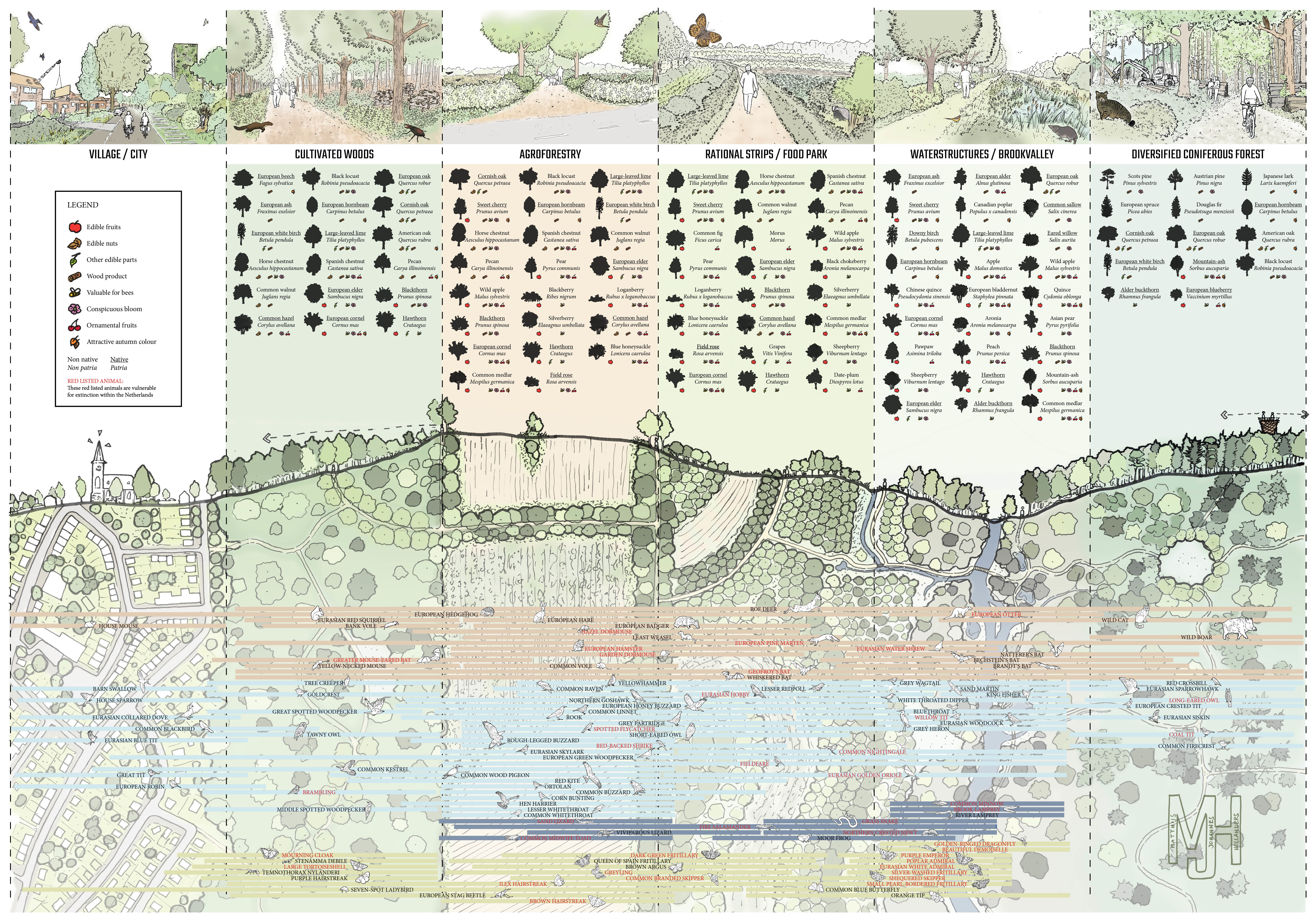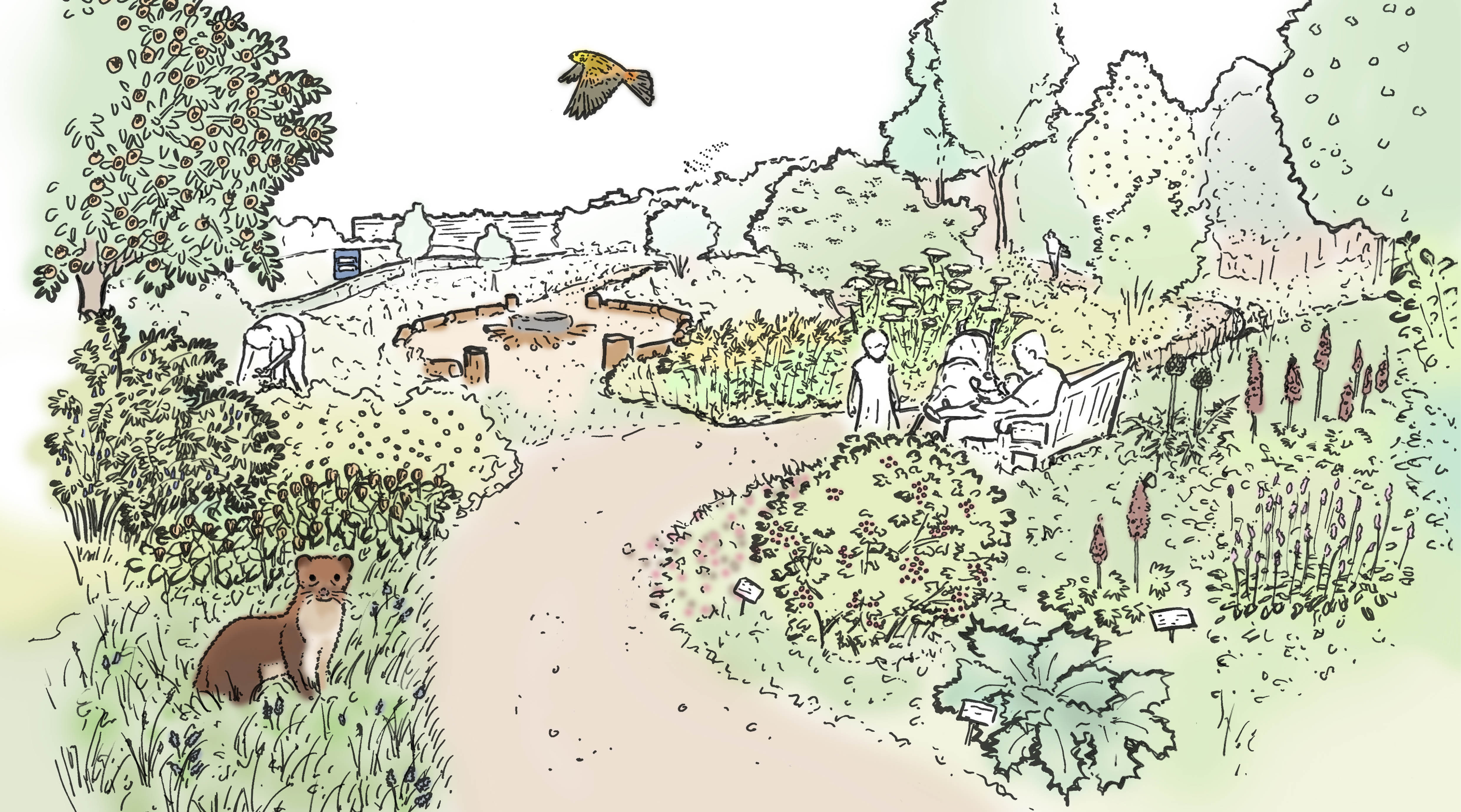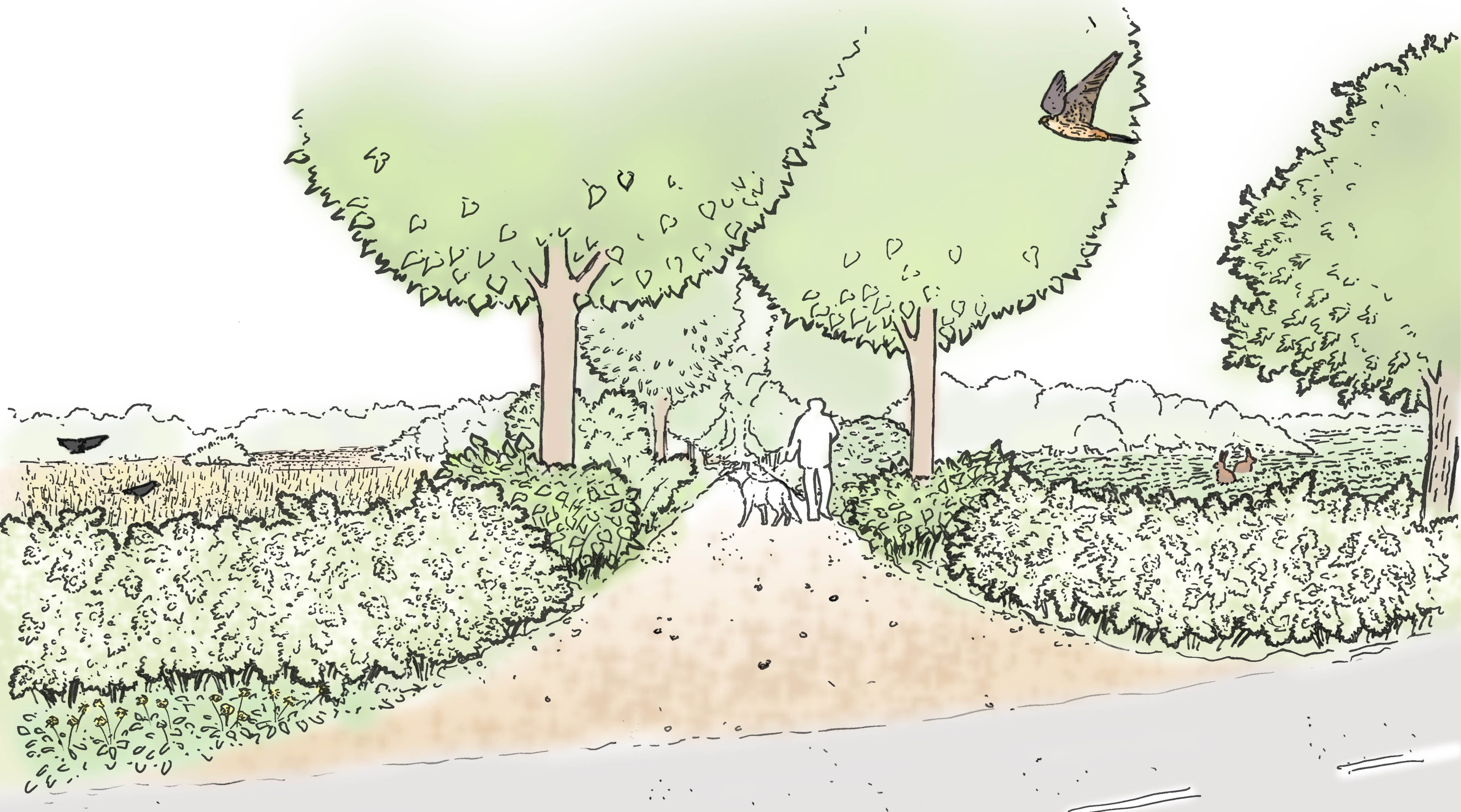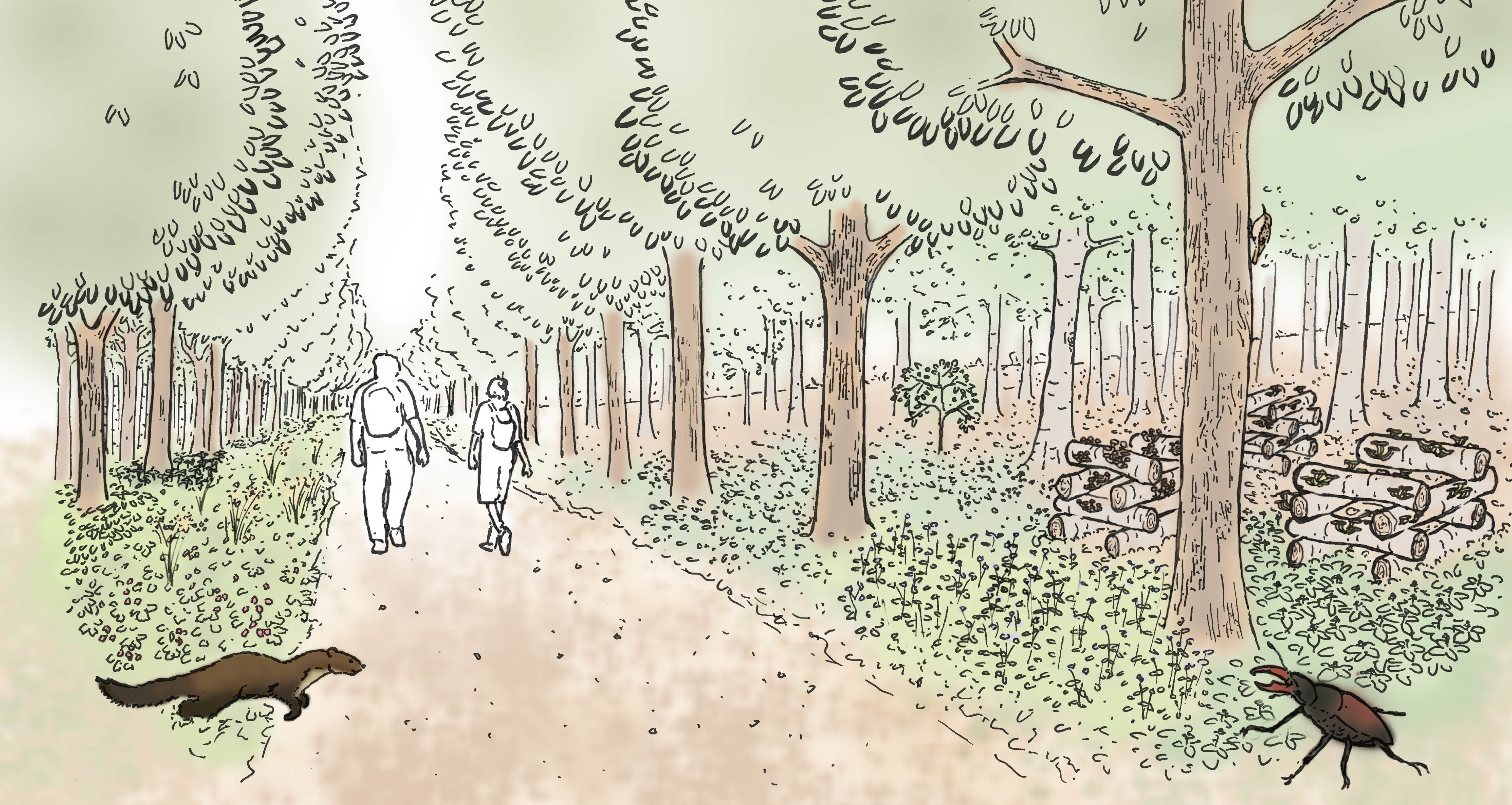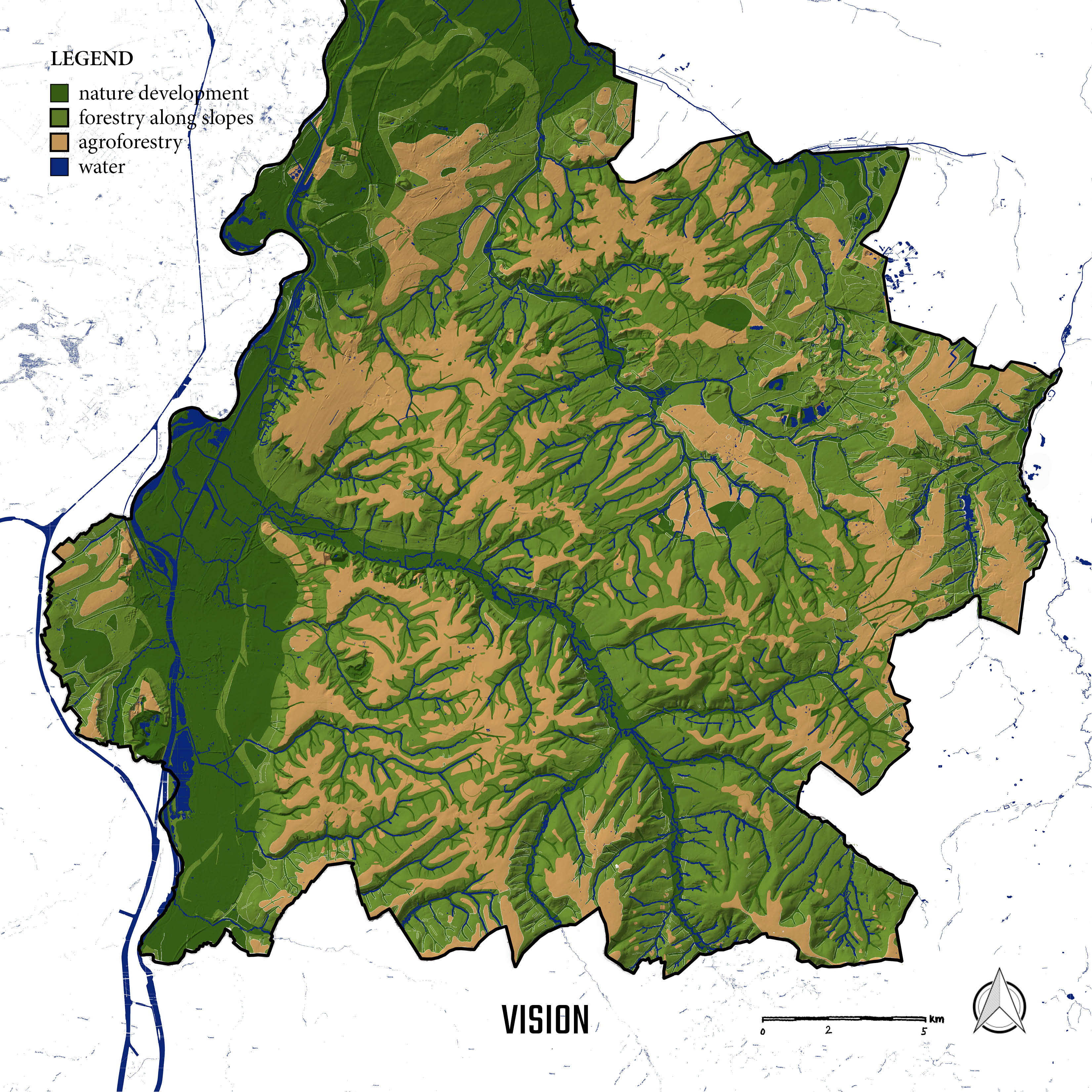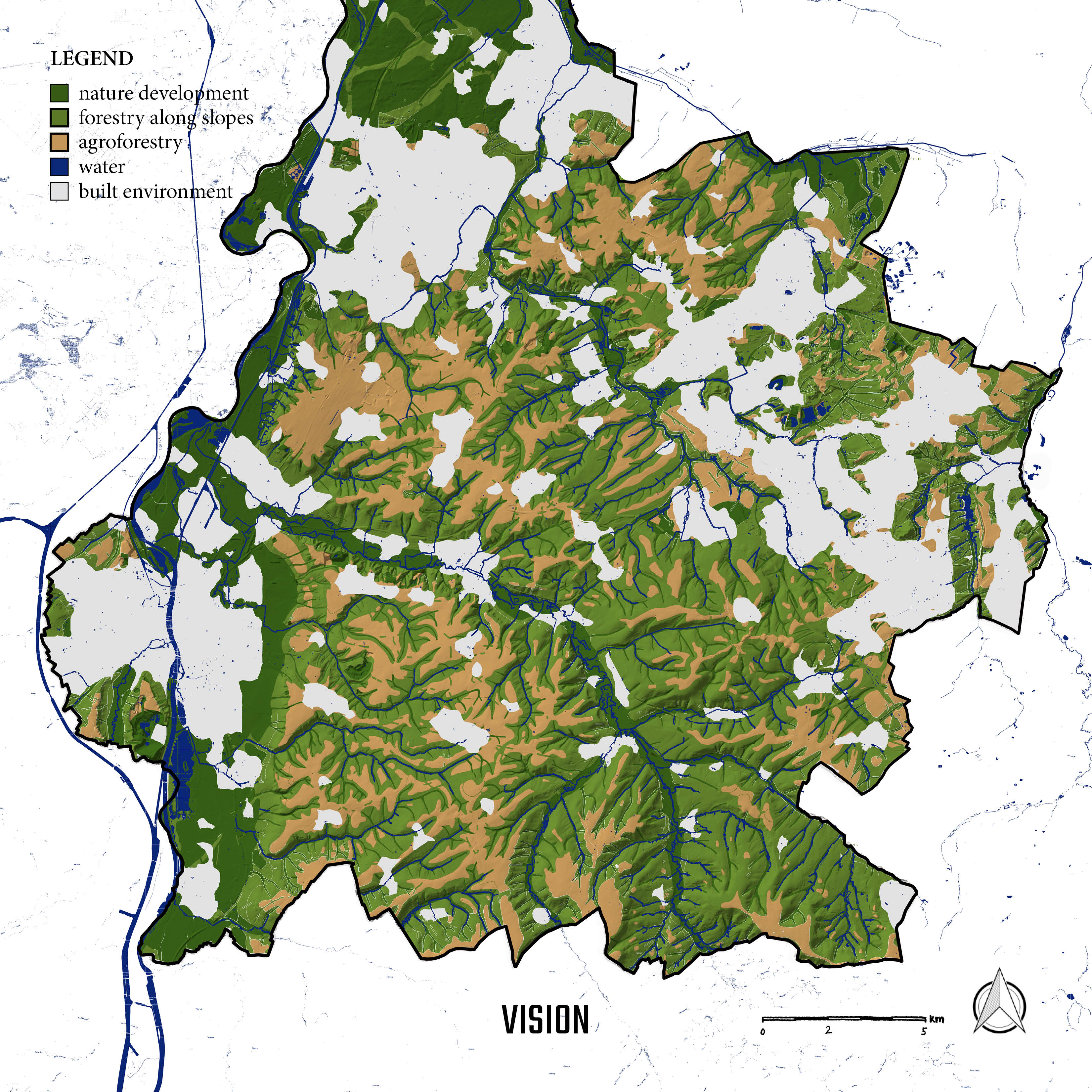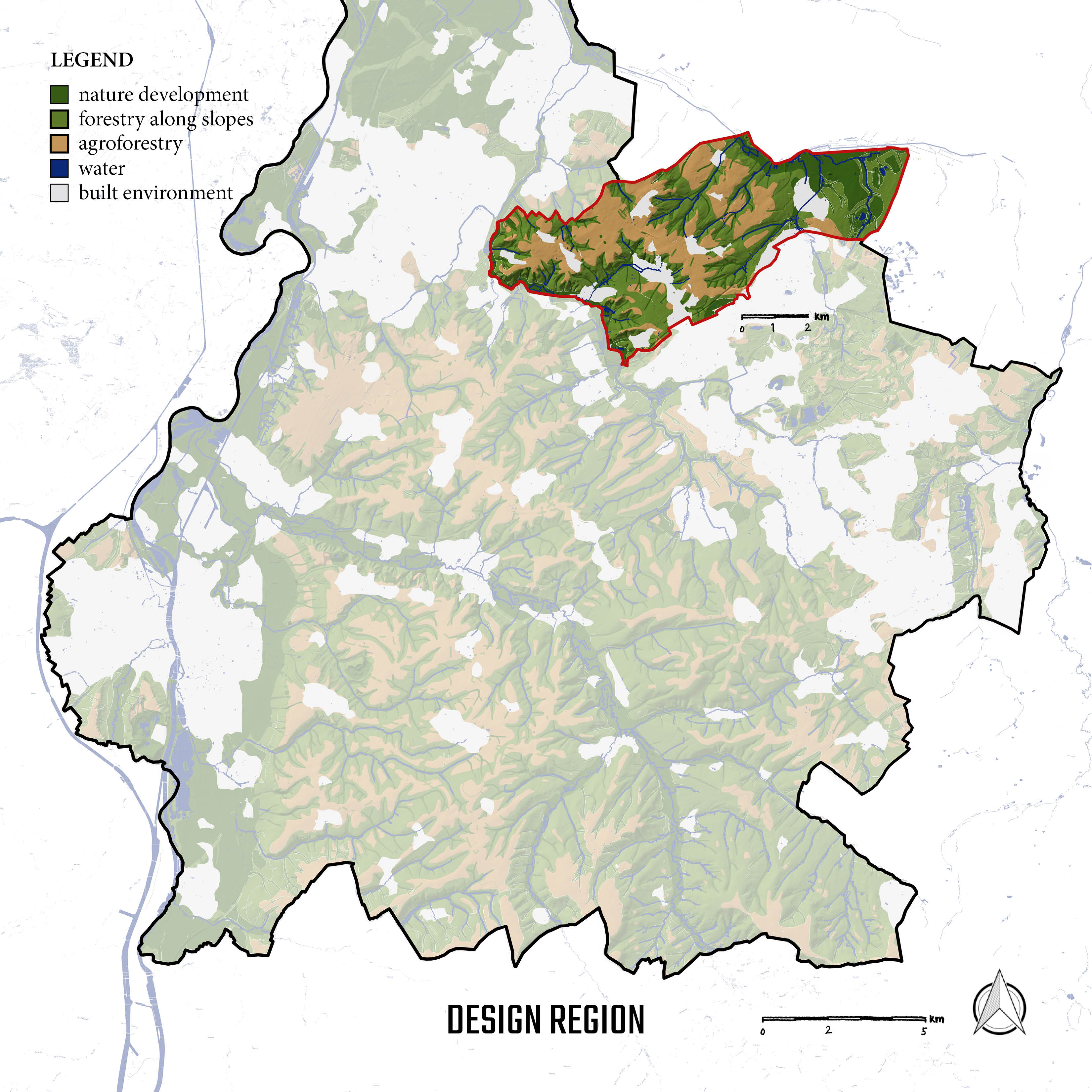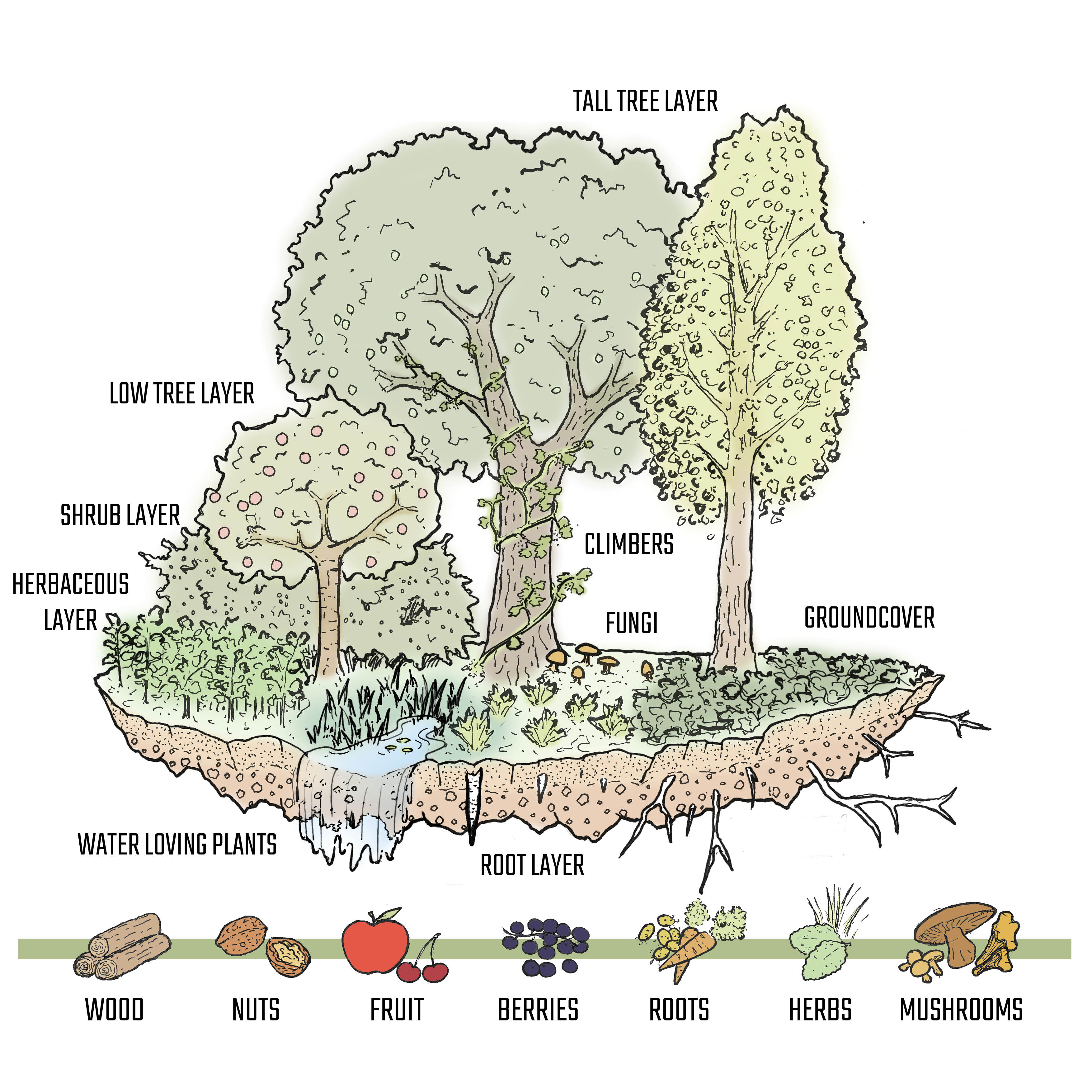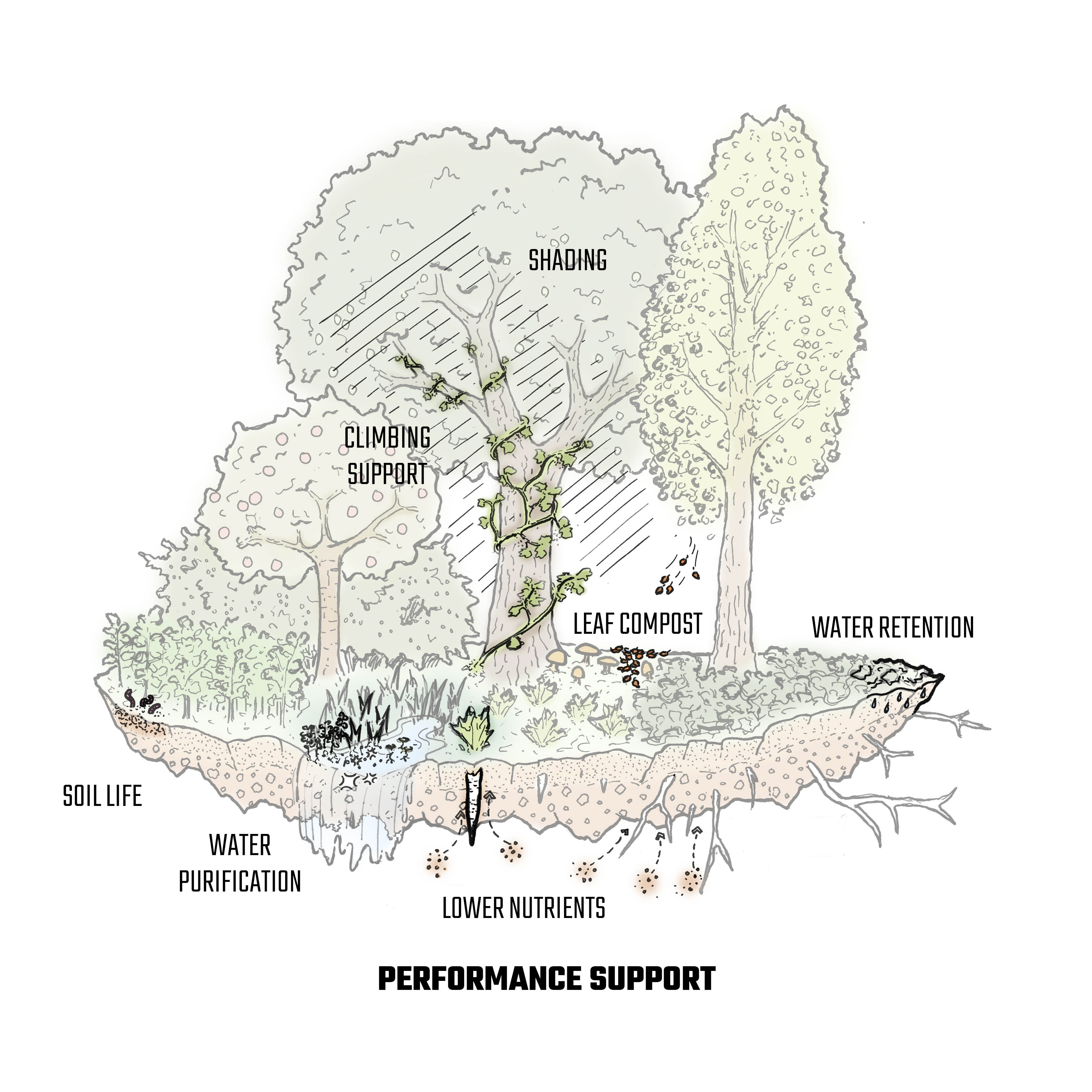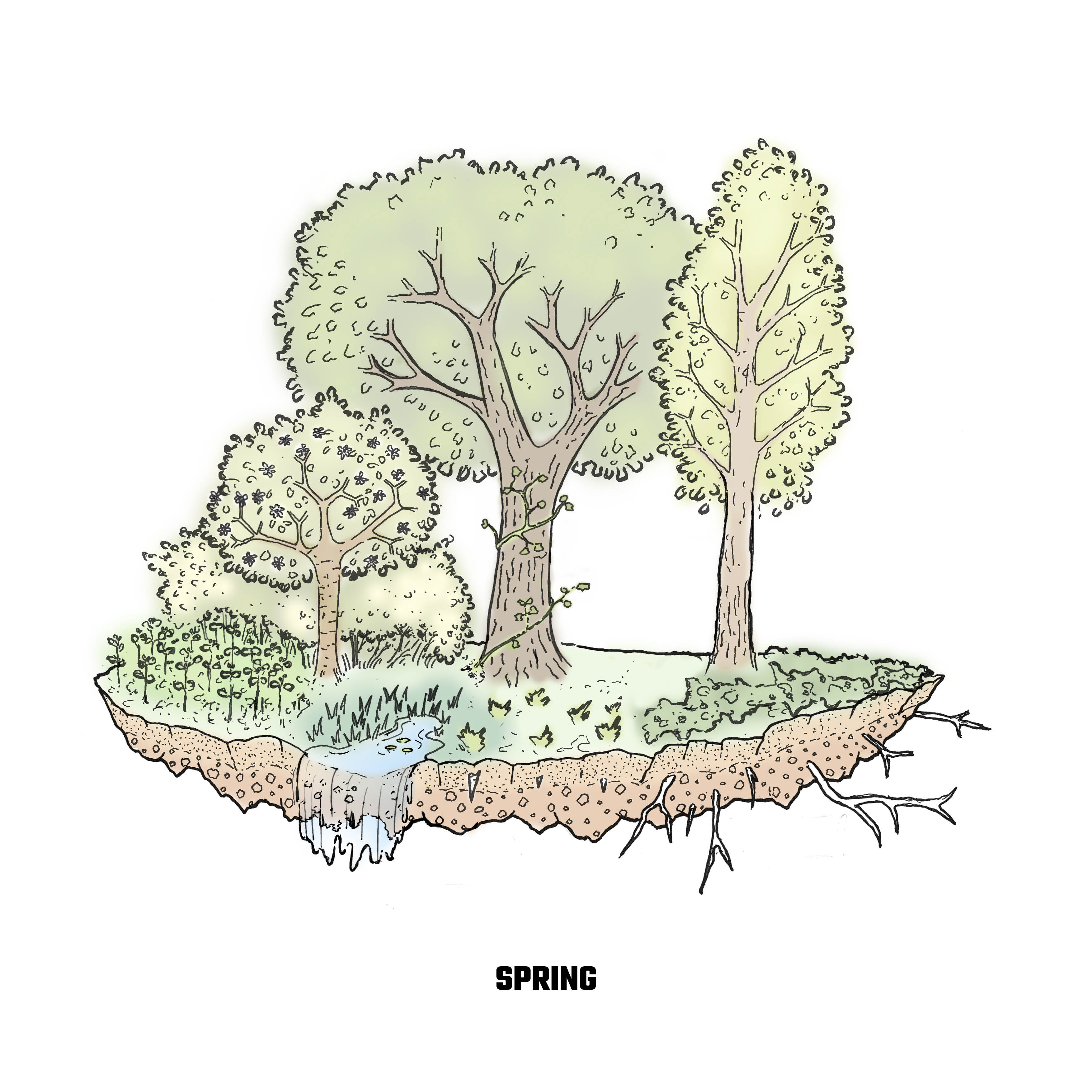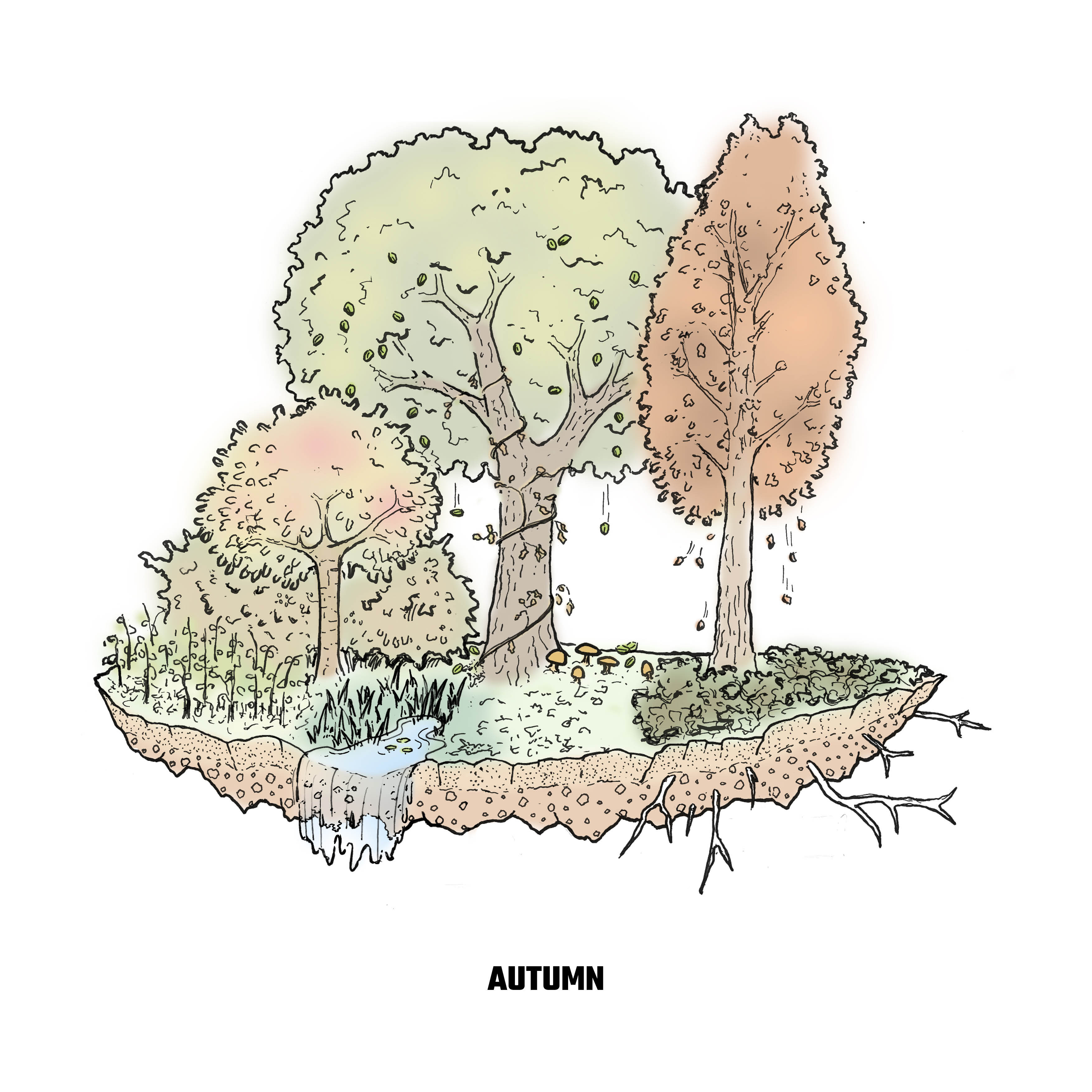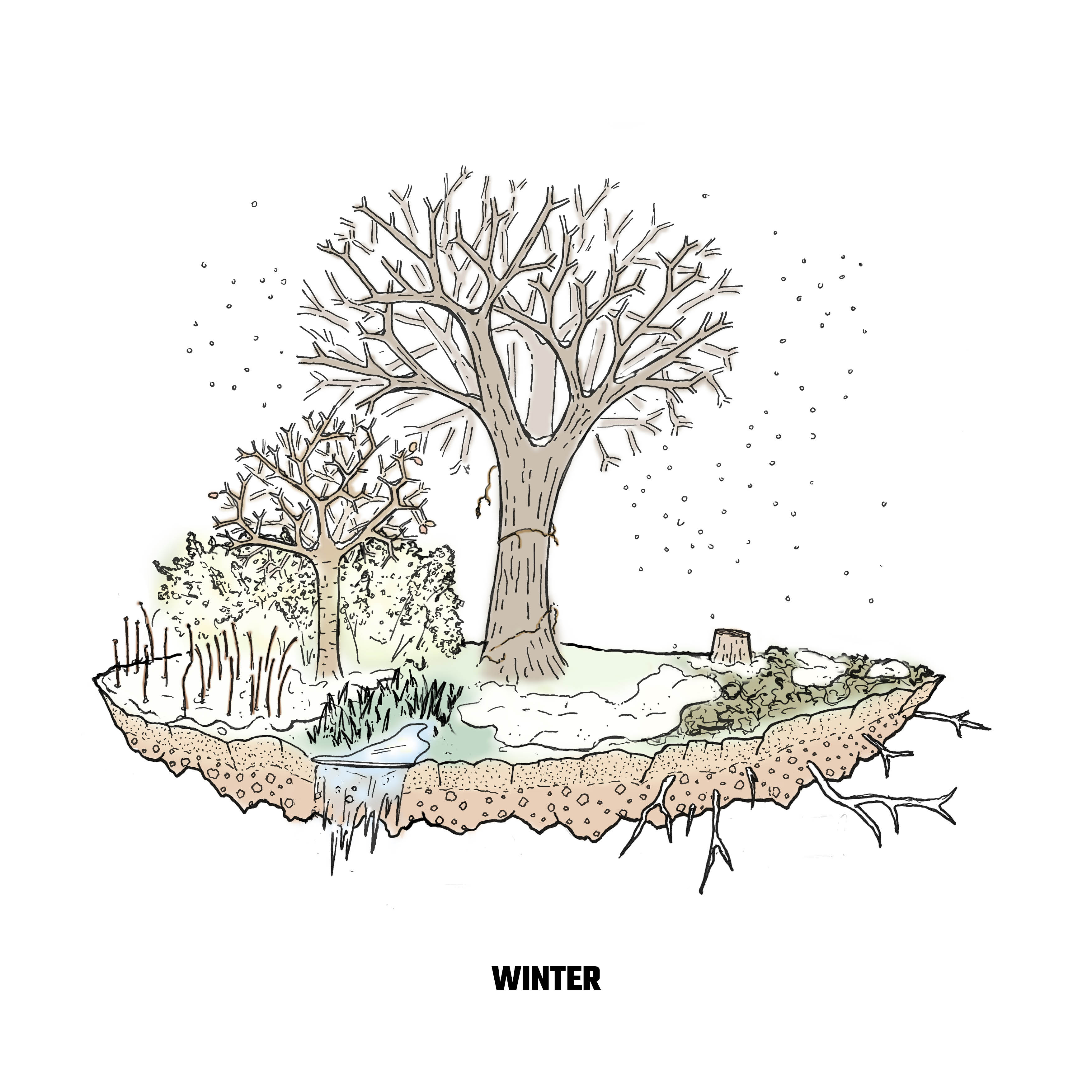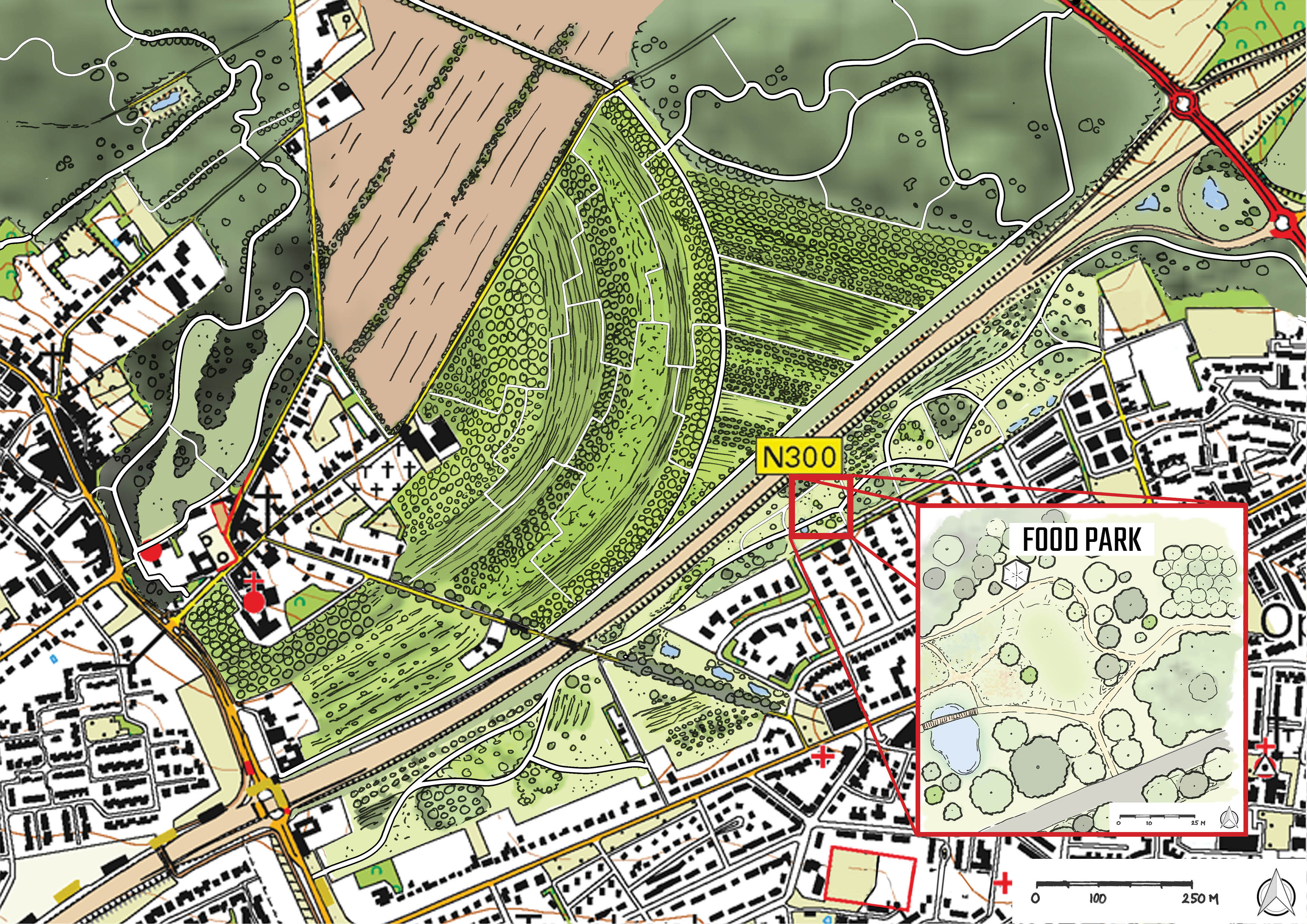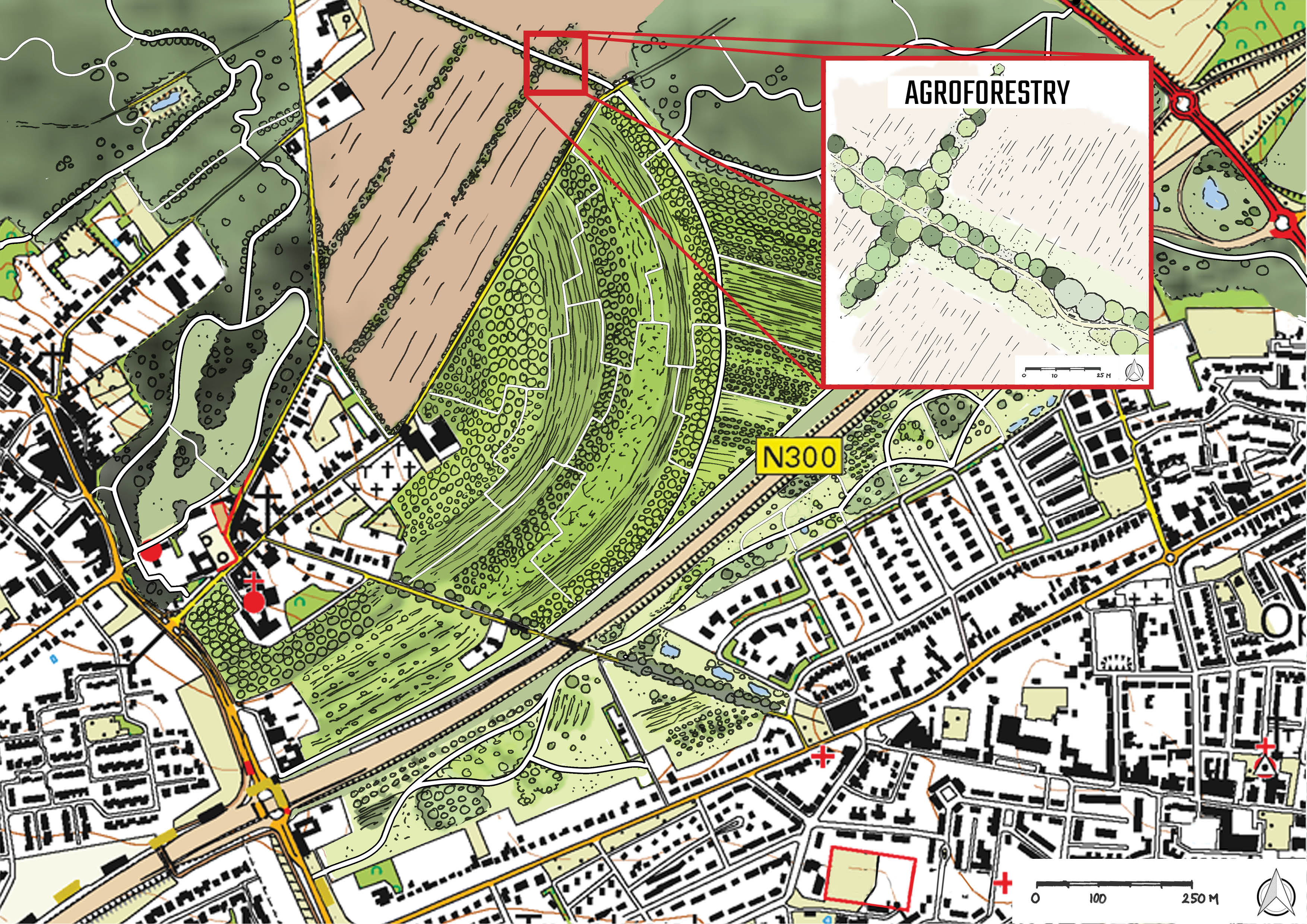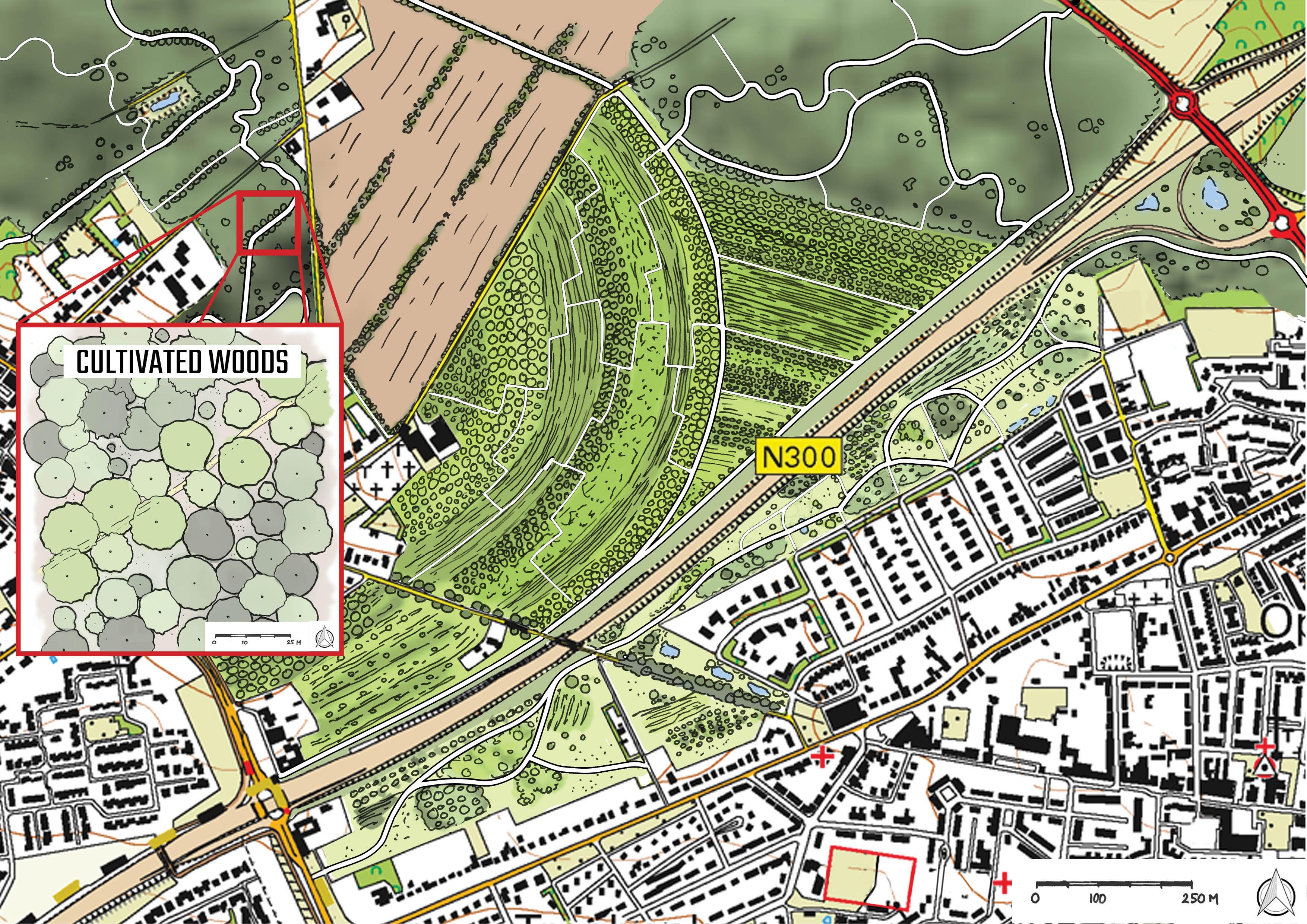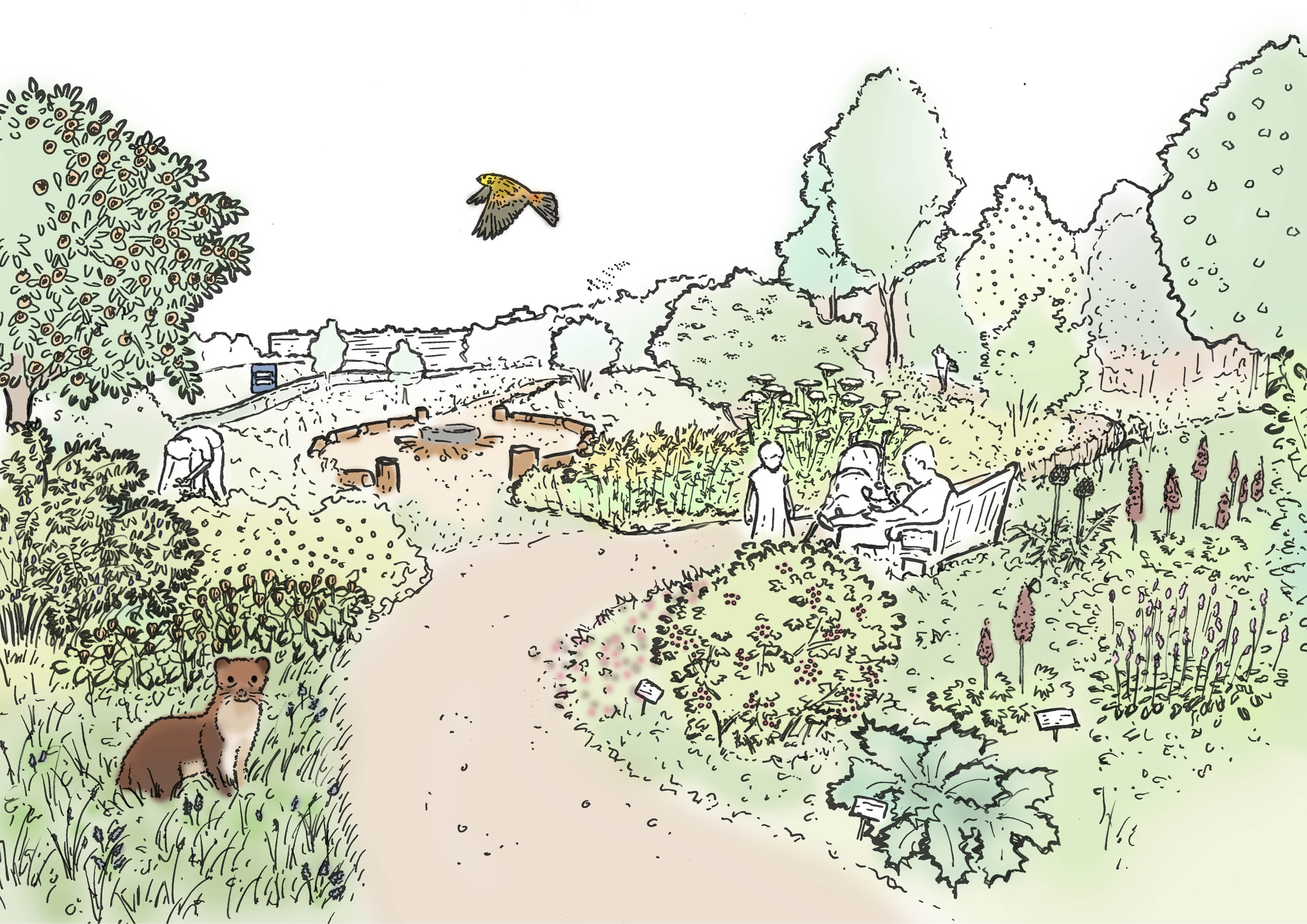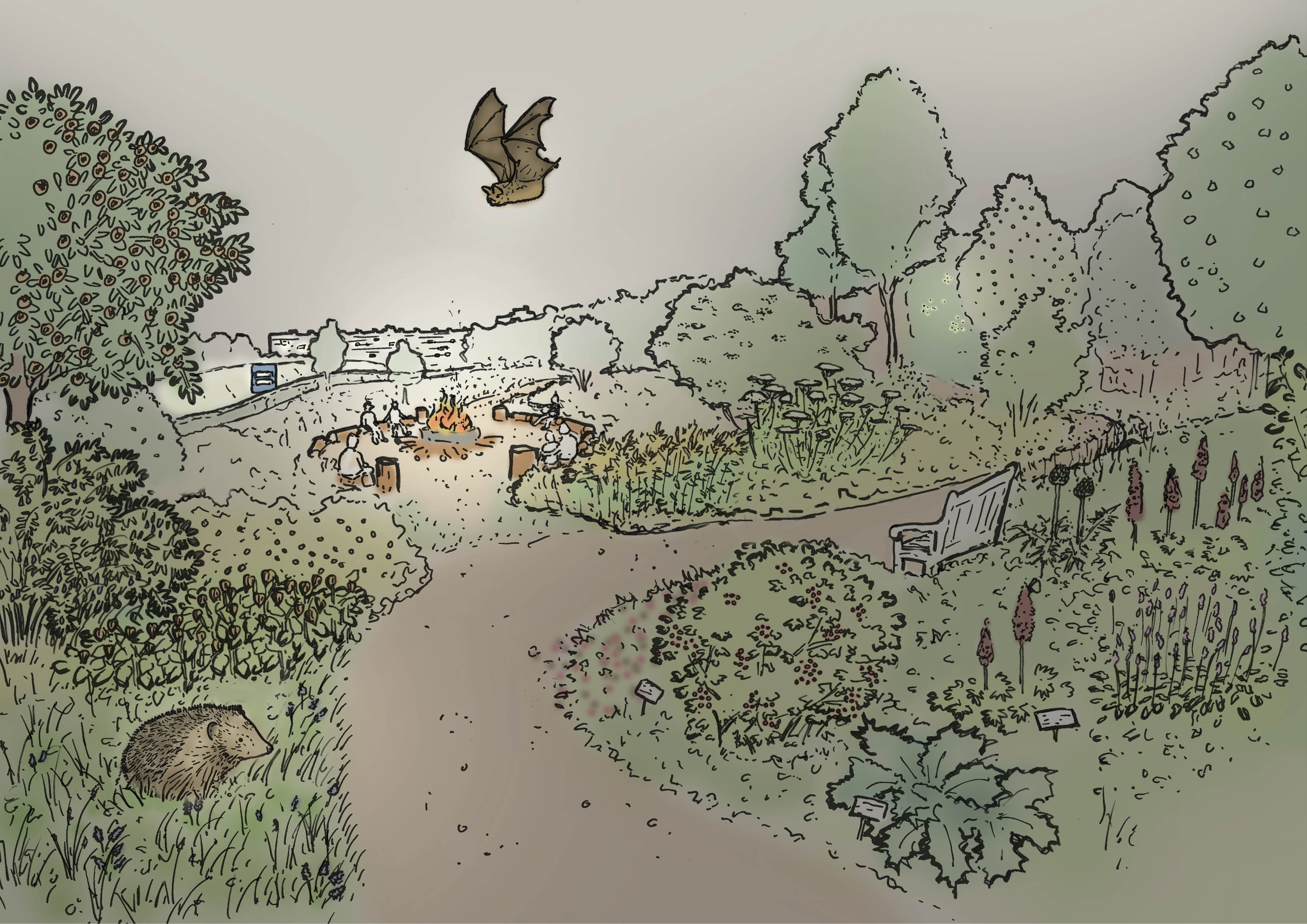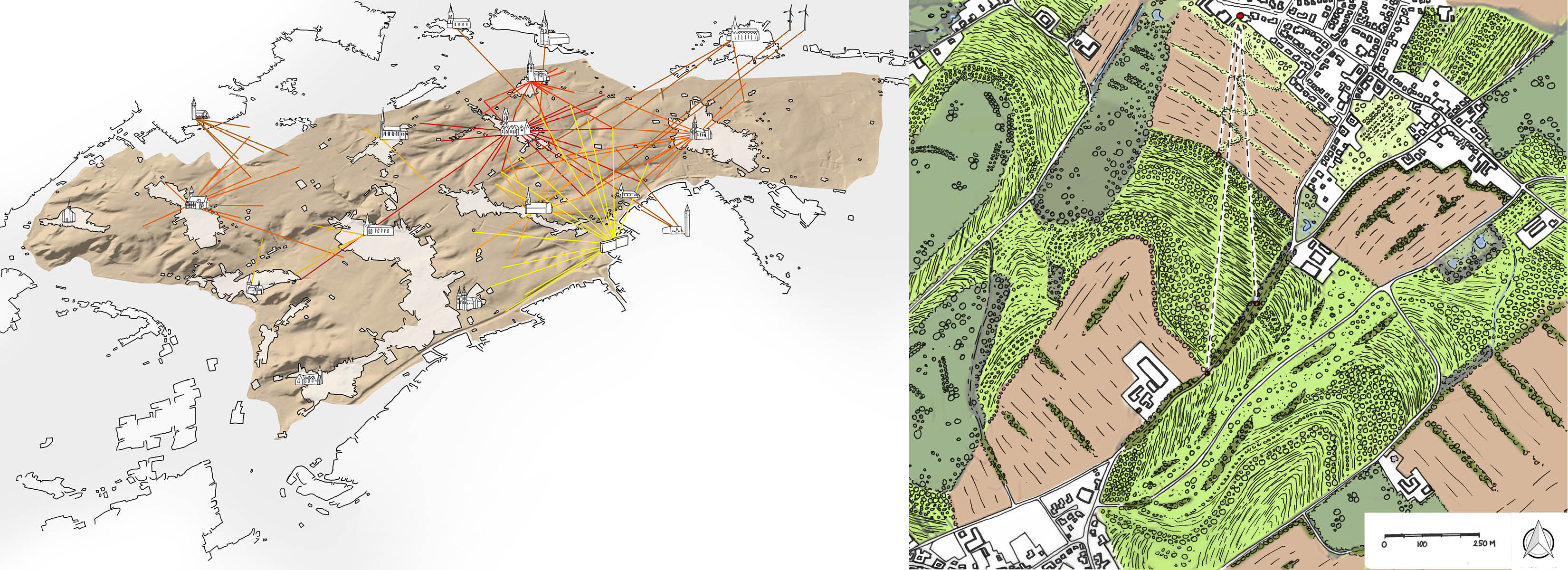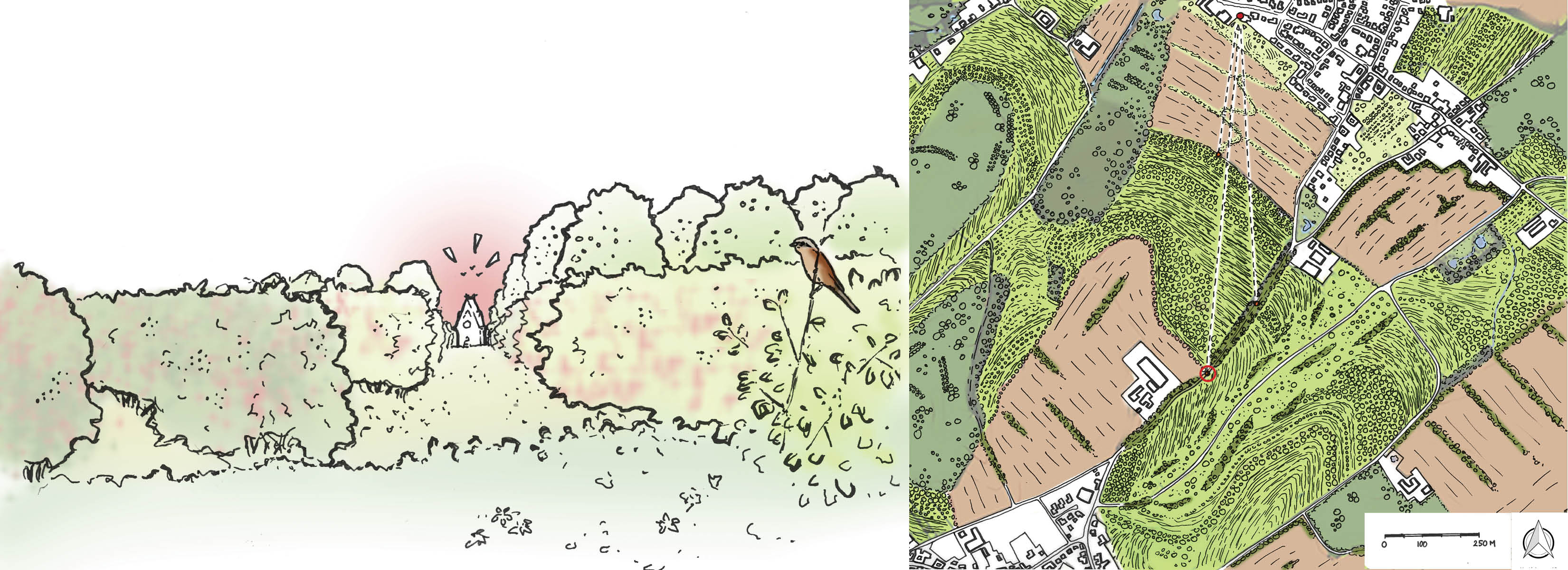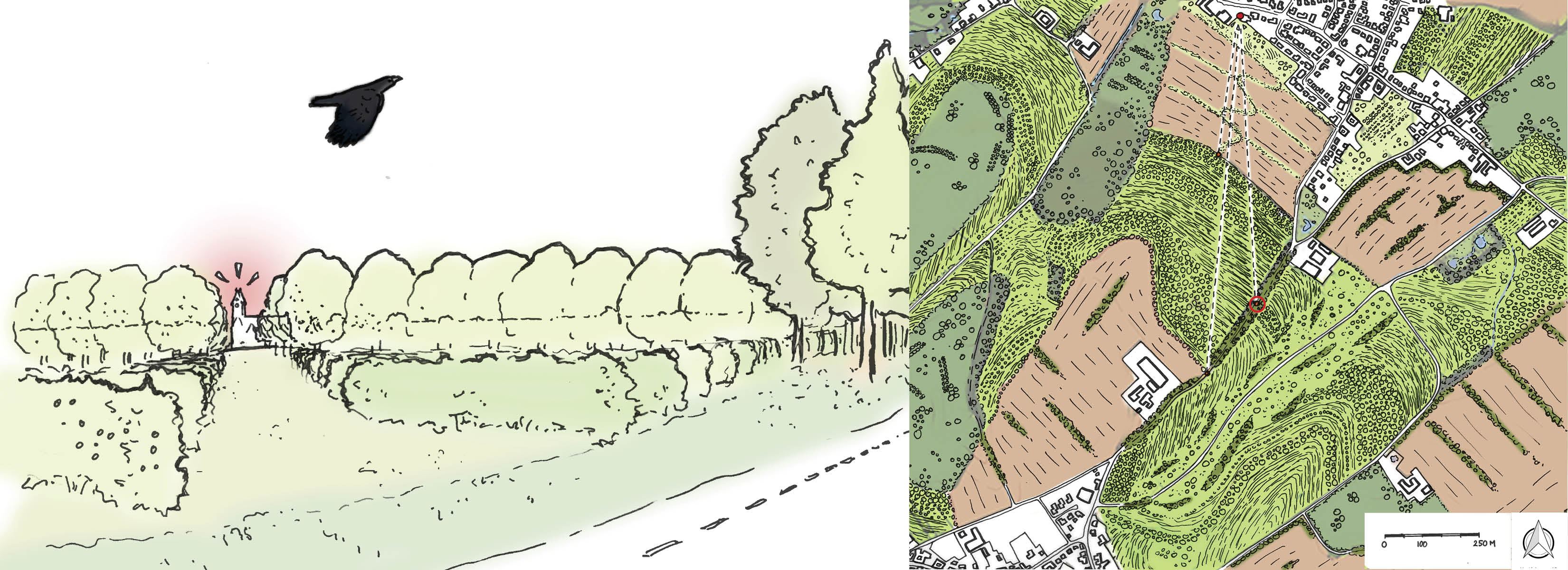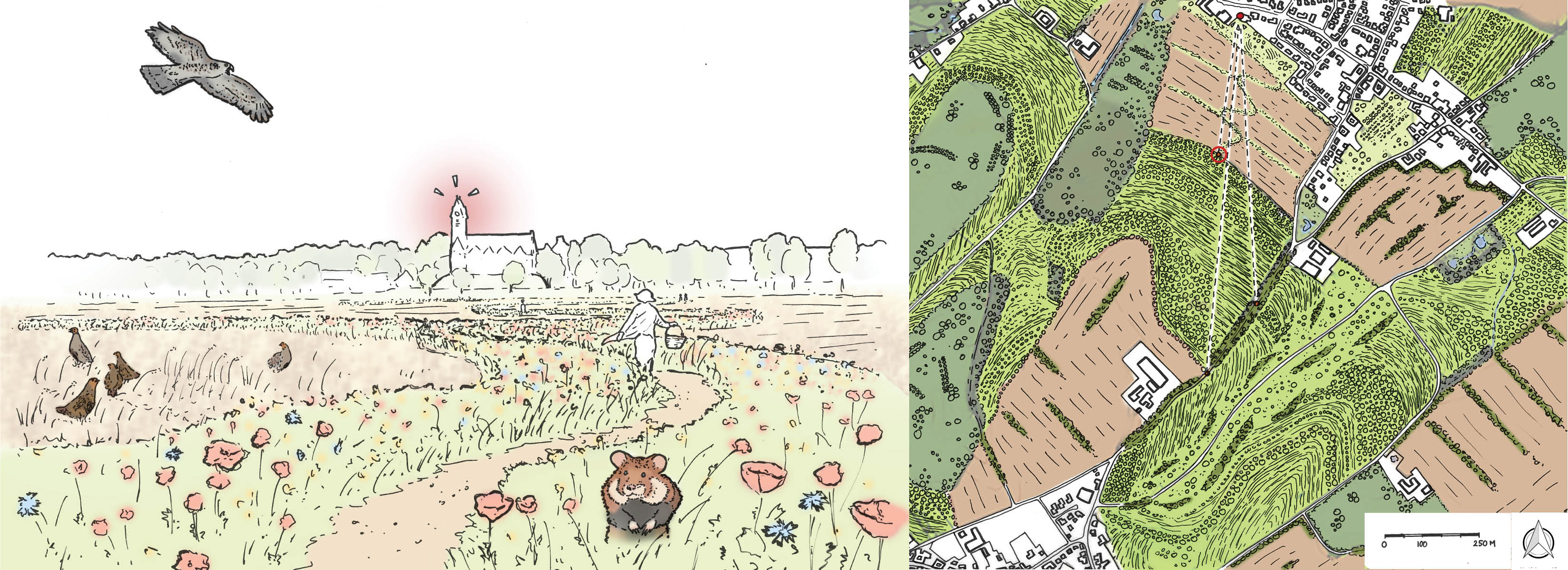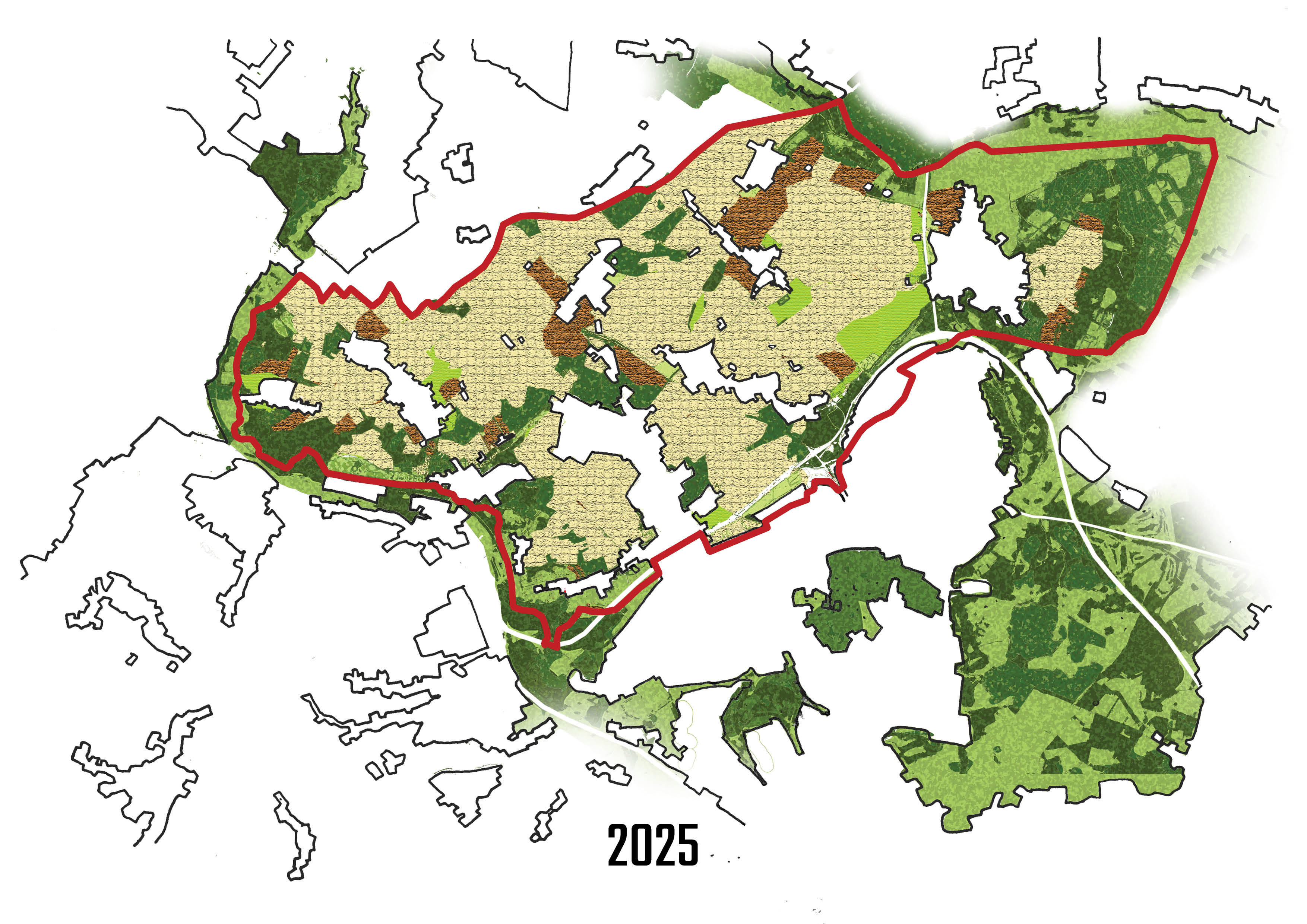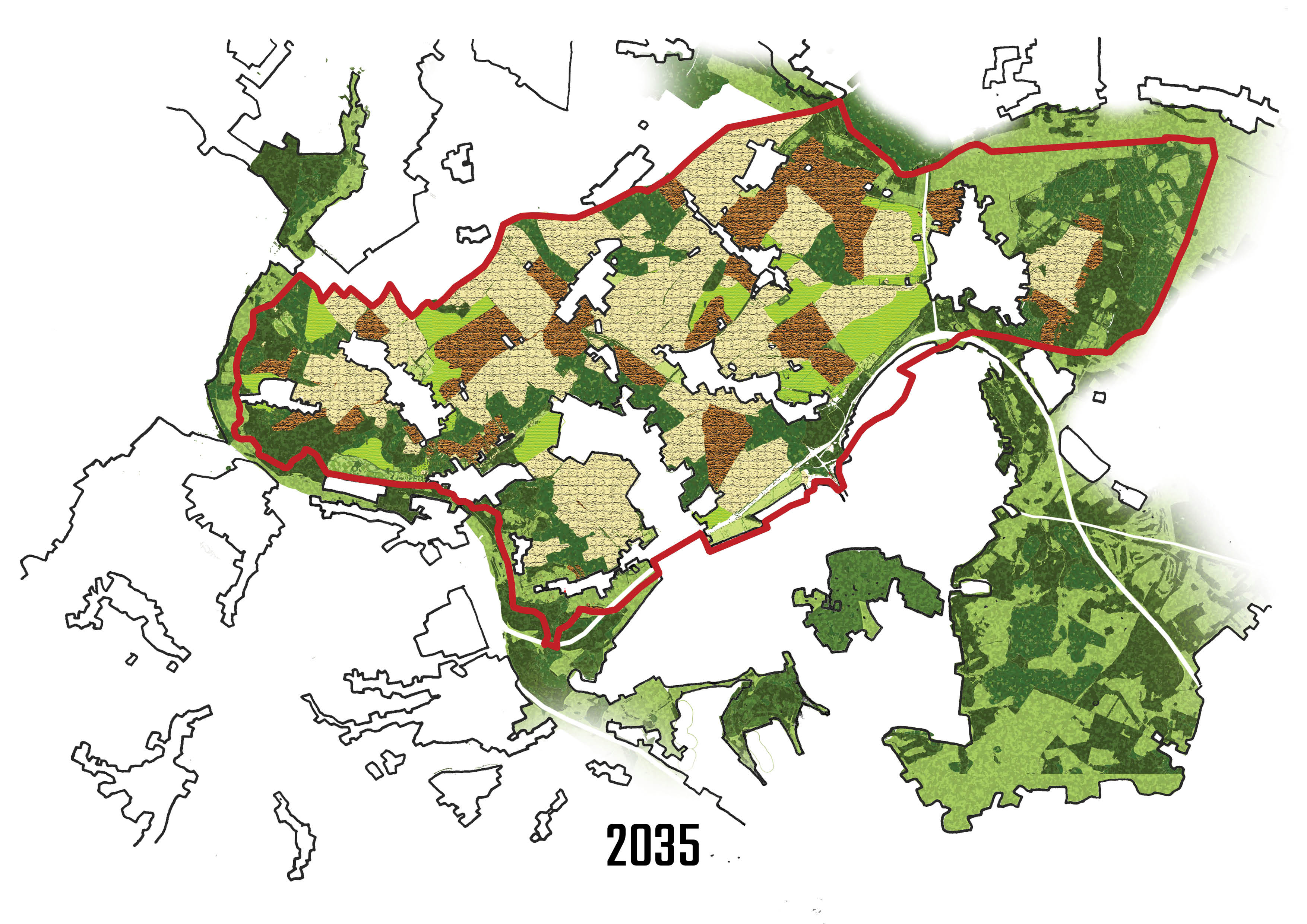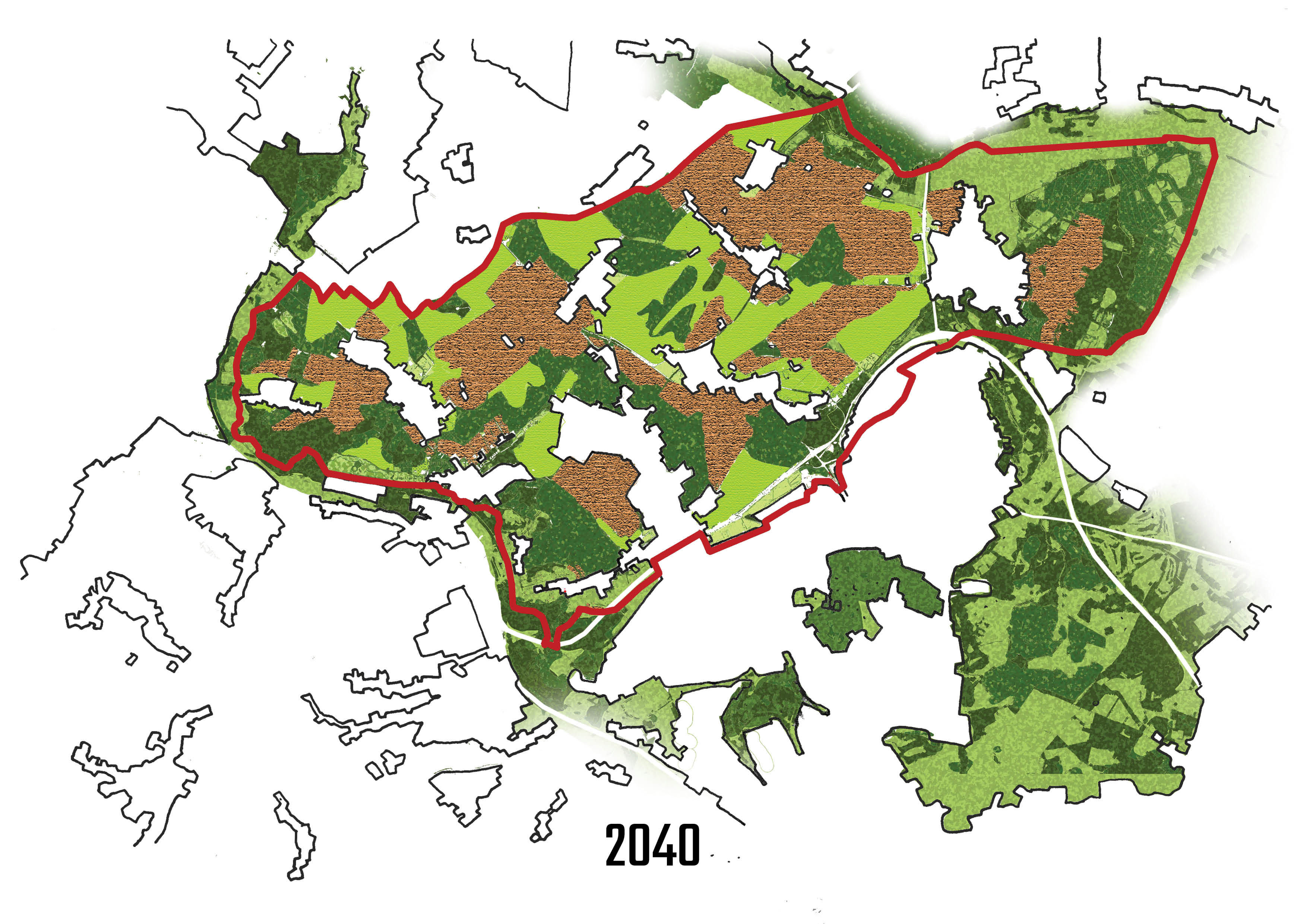Productive Symbiosis
Graduation project: Msc Landscape architecture
Typologie: Landscape architecture
Location: Parkstad Limburg region
Mentors: Nico Tillie, Michiel Brouwer and Frits van Loon
Available online: TU Delft repository, Researchgate
Published: Blauwe kamer NR.3 / 2020
Parkstad Limburg used to be a wealthy region due to the thriving mining industry. The closing of these mines meant economic decline and the neglect of this region. To counter these consequences, many initiatives focus on the recovery and improvement of the landscapes’ qualities. Nature development for recreational use along the brooks, for instance, has started to greenify the landscape. The agricultural lands, however, are dealing with more challenges than the landscapes’ attractiveness. Soil compaction, erosion, and a poor carbon cycle are under discussion. The large scale agricultural practice also influenced the ecological value of these lands. Small landscape elements have been removed, resulting in shrinking biodiversity.

Basic vision
The design objectives are meant to support future developments in the agricultural lands of the South-Limburg. Ecological structures are enforced, soil and water are held in place and greenhouse gas emissions are reduced while supporting new farming industries.
Down in the brookvalleys, nature developments have allready taken place in the last decade and turned these blue veins from sewage system into the ecological backbones of the 'heuvelland'. The basic vision shows that the slopes are reforested to prevent erosion of valuable loess-soils, capture CO2 and grow wood. These slope forests have vanished over time due to the cultivation of our land. The plateaus remain semi open, to ensure wide views will be preserved and can be used for the growth of more ‘traditional' crops.
The design region includes an entire stretch of land in between the Geleenbeek and the Roodebeek. This means that results of this design can also be applied in other parts of South-Limburg.
new agricultural model
New farming systems should be layered and contain woody plants. Such permacultures consist of rooting crops, groundcovers, bacteria, fungi, a herbaceous layer, a shrub layer, climbing plants, fruit trees, and nut trees. If possible, cultivation on the water can be added to this list and non-edible ‘crops’ like pioneer tree species for wood production could also be considered. The diverse offer in species, flowering periods, heights, and densities attracts a diversity of other species and establishes an ecological balance. This balance ensures not only a decrease in diseases and plagues but also better and more numerous microclimates and better soil quality.
Deep rooting plants are able to absorb nutrients from lower soil layers and when they die, these nutrients become available for the surrounding plants. The addition of different rooting systems also ensures a more stable soil that retains more water and prevents erosion. Some species will therefore only grow to support other plants. A positive effect of polycultures for farmers is the diverse harvest. In bad years for one crop, other crops may do well to balance the yields and thus ensure a stable income.
The recreational value is high in a layered landscape, due to the seasonal changes, and due to all the sensoric experiences attached to the diverse species. Colour changes through the year are much more varied than seen in a farmland where only one annual crop is grown and harvested, to leave a plowed landscape behind.
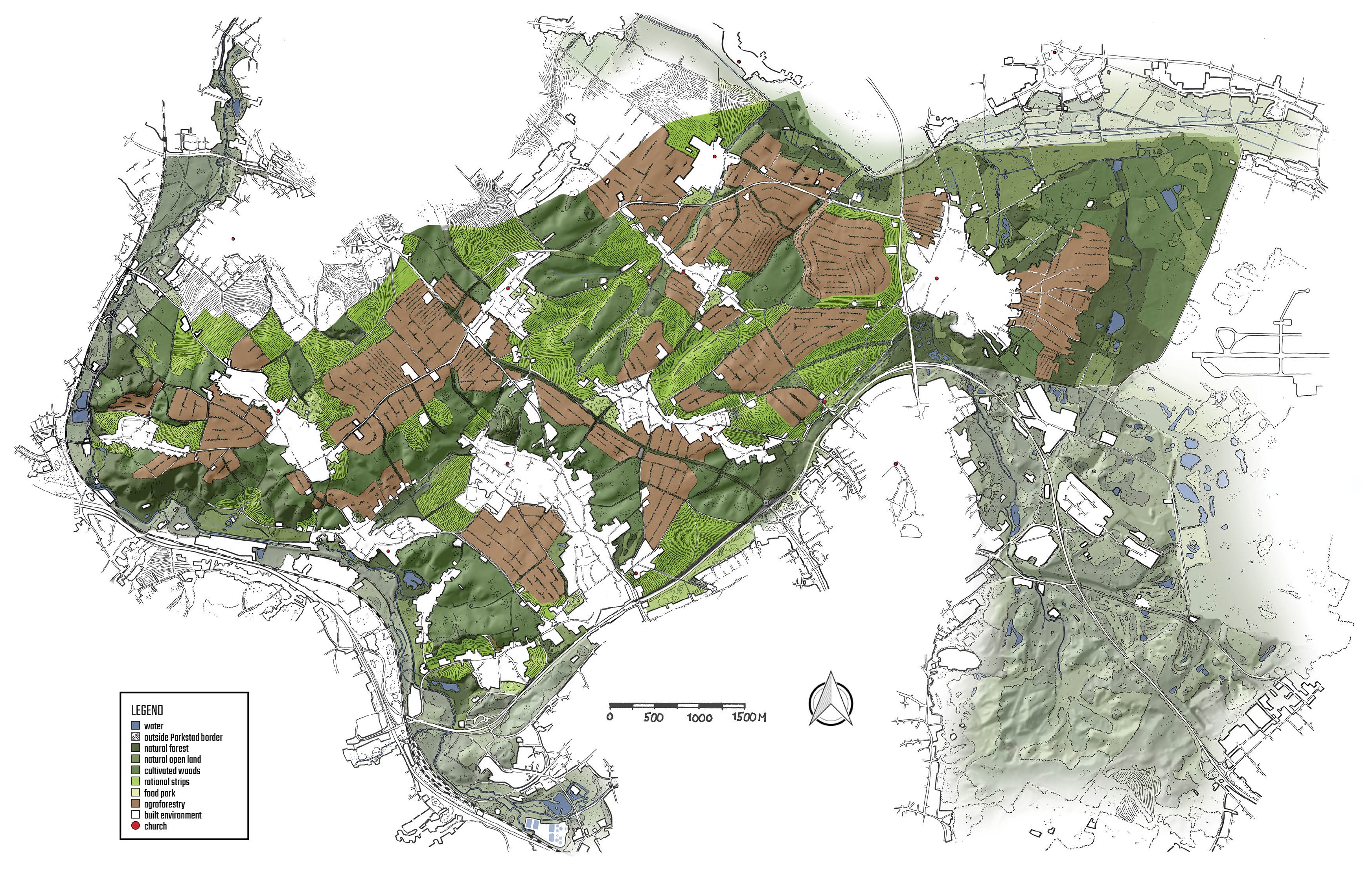
New typologies
The previously introduced design objectives and basic vision resulted in a detailed elaboration in the design region. Four new farming typologies were developed; the ‘food park’, ‘rational strips’, ‘cultivated woods’ and ‘agroforestry’ fields. An area enclosed by the villages of Amstenrade and Merkelbeek and the city of Brunssum is shown to introduce this sequence of new farmland typologies.
The monoculturous plains which are only part of the year covered with annual crops are replaced by a diverse system and while moving through this landscape a sensoric experiences will be offered. Besides these experiences for humans, the alternation of dense and more openlandscapes also ensure a habitat for all kinds of species.
Food park
Attached to city edges and villages, food forests can be more than just a food producing patch of land; they can serve as a park. The food park is there for your daily walk, to get a sense of community and serves as a place for children to play and explore.
The food park has a wide range of food producing plants and is organised in a more romantic configuration. This park typology offers educational value and a place for inhabitants to connect. Redefining our relationship to nature is a core quality of the food park. By giving a part of the landscape back to the inhabitants, they will feel more attached to their heuvelland and will commit to preserving and improving this unique landscape.
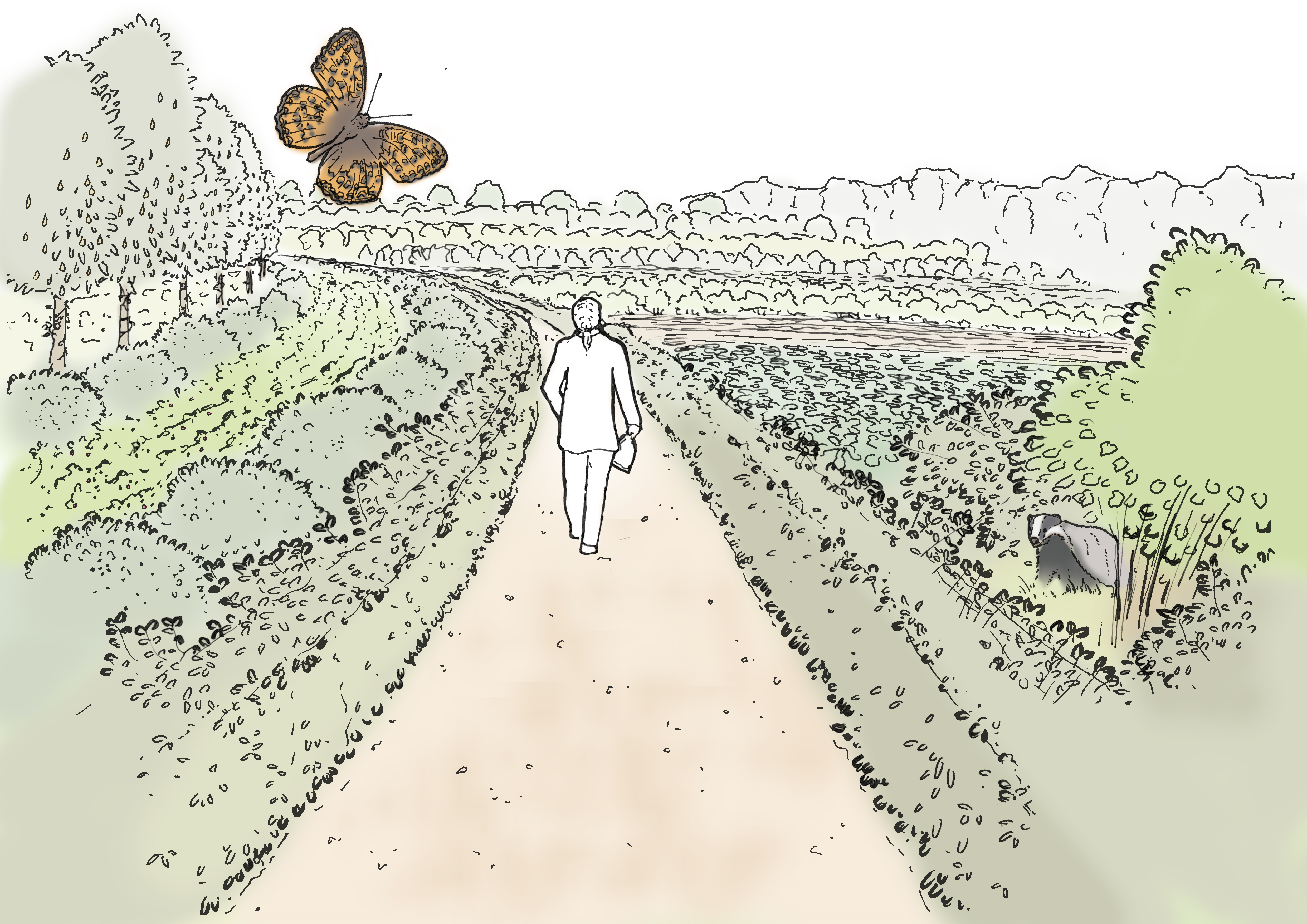
Rational strips
The rational food forest is filled with linear strips of plantation. The combination of all plantation layers makes a diverse system. The strip cultivation ensures an easy harvest method. Technological developments will help in this transition.
The strips follow the contourlines of the topography in the landscape which prevents water run-off, just like the graften used to do. Smart configuration can also guide water to dryer ridges along those lines. Alternated plantation of species can be valuable if their growth rate or size are matching, increasing the yields.
Small birds and species like the hazel dormouse will thrive in these lands in which they can find shelter and profit from the rich food supply.
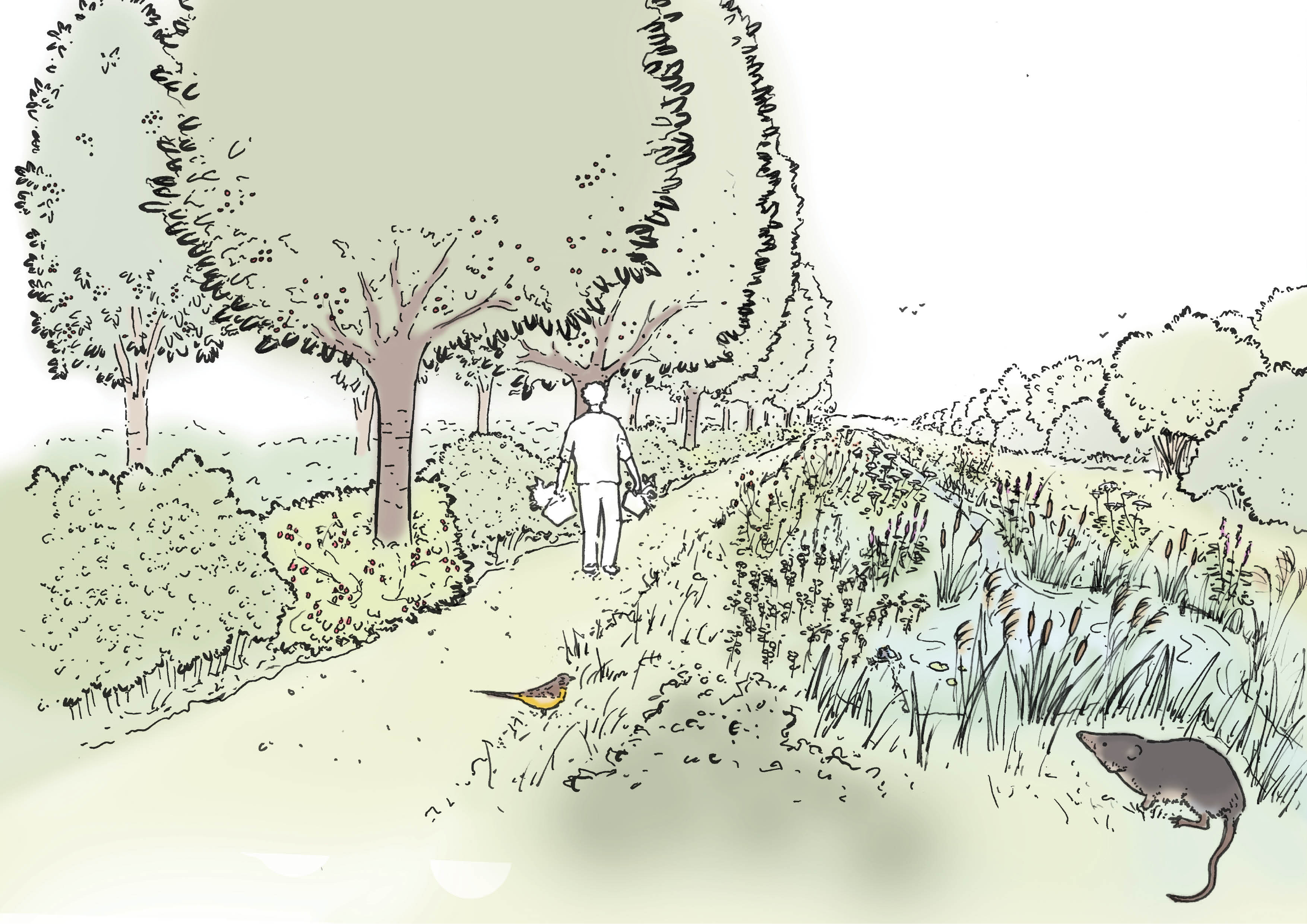
Retain water
The previous example showed solutions which help the retaining of water in the agricultural land. Nevertheless, water will also aggregate in the ditches. Therefore the current ditches should be transformed from a channeled drainage system into an ecological line structure with gentle sloping edges. Ecological value can be increased by adding small pools where amphibians can settle. Alternation of shaded and sunny parts ensures diversity and the prevention of evaporation. It is important that waterstructures can continue and are not blocked by other infrastructures.
Besides ecological value, cultivation in and along the water can be practiced on a smaller scale. These waterstreams will flow into the brook ecosystem.

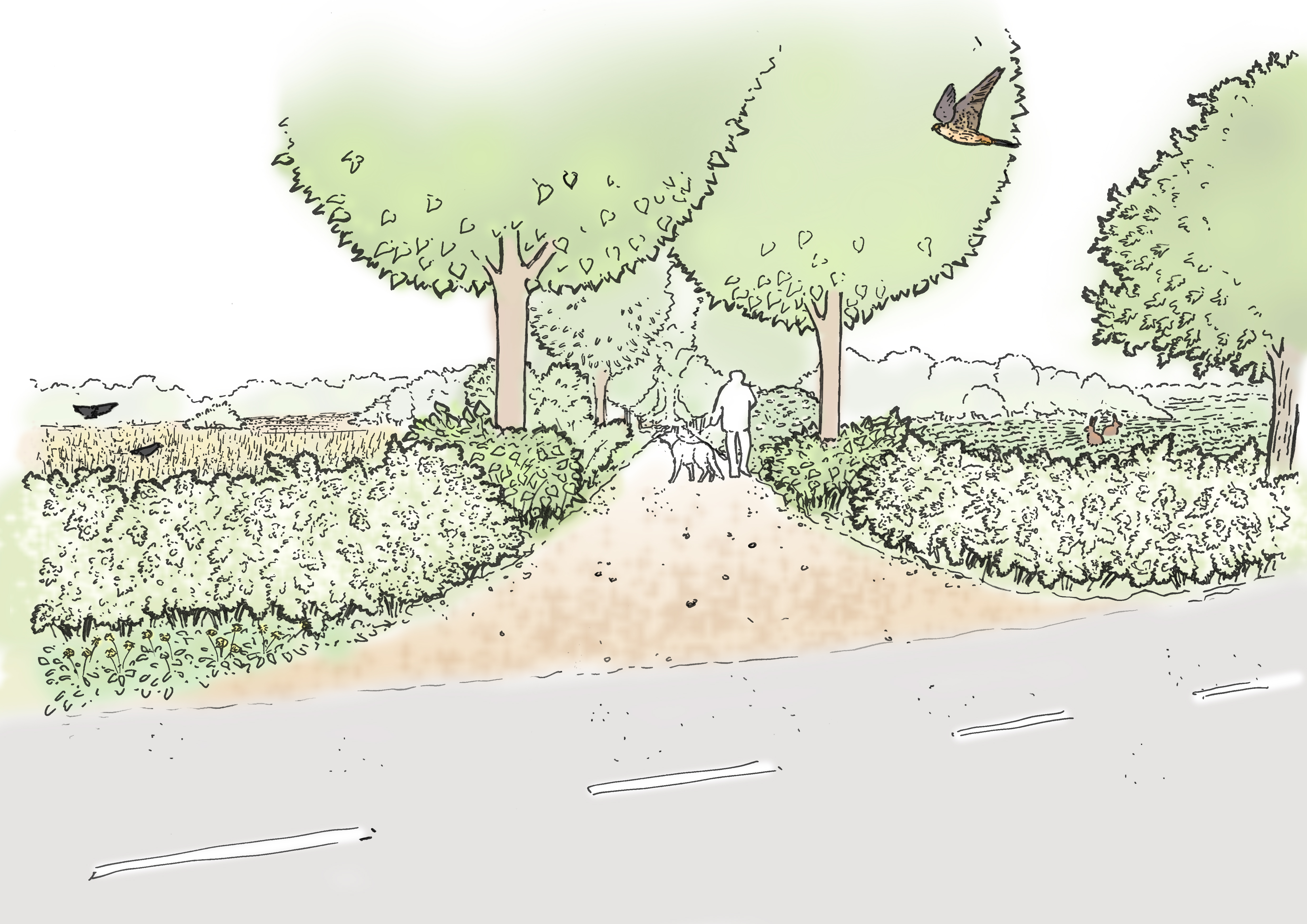
Agroforestry
The flat plateaus are used for the growth of traditional crops such as wheat and potatoes. The barren landscape, however, is replace by a landscape including small ecological strips; an agroforstry system.
These strips are used for recreational routes, but they are also good for wind protection, biodiversity and they are productive. Fruit trees, berry-bearing shrubs and wood producing trees are implemented. The position of these elements is based on topography and orientation to the sun, to prevent water run-off and limit the yield-loss along the edges.
The harvesting methods are also important to ensure species like the European hamster (or Korenwolf) will manage to survive. A reintroduction program is already started in this region, but future developments should take the habitat requirements of this animals into account.
Preserving views
Besides reintroducing trees in the heuvelland, there is also a need for open landscapes. Not only biodiversity needs this variety, but an open plateau landscape is also valuable for the preservation of wide views for humans. These views are important for orientation and especially in this region, the church towers serve as guiding elements in the landscape.
In order to preserve these views, cuts in plantations can be made or entire patches of land can be kept open. Flowersbeds instead of shrubstructures for instance could be a way to also serve this goal. Besides preservation, highlighting these elements can add to the landscape experience. The view to a church tower arouses curiousity and keeps the visitor moving.
Other elements like hollow roads and graften can be highlighted in the same way. For instance, the contrast between the enclosed shape of a hollow road and the wide view at the end of this 'tunnel' should remain.

Cultivated woods
These slope forests consist of linear plantations of nut and fruit trees and a wild plantation of wood producers. The linear structures are easy to harvest, while the wood is produced in an way which resembles the natural system. Variation in species and ages is important for biodiversity, but also to prevent diseases and establish a healthy forest ecology. Fungi cultivation could be added in enrich the harvests from these forests. Tree configurations can add extra visual experiences to the cultivated woods.
These forests contribute to the increasing demand for high quality wood. The Netherlands will not be able to become completely self sufficient, but has to do its best to produce as much local wood as possible. CLT and solid wood architecture are growing and using our own landscape to produce our building materials is something great.
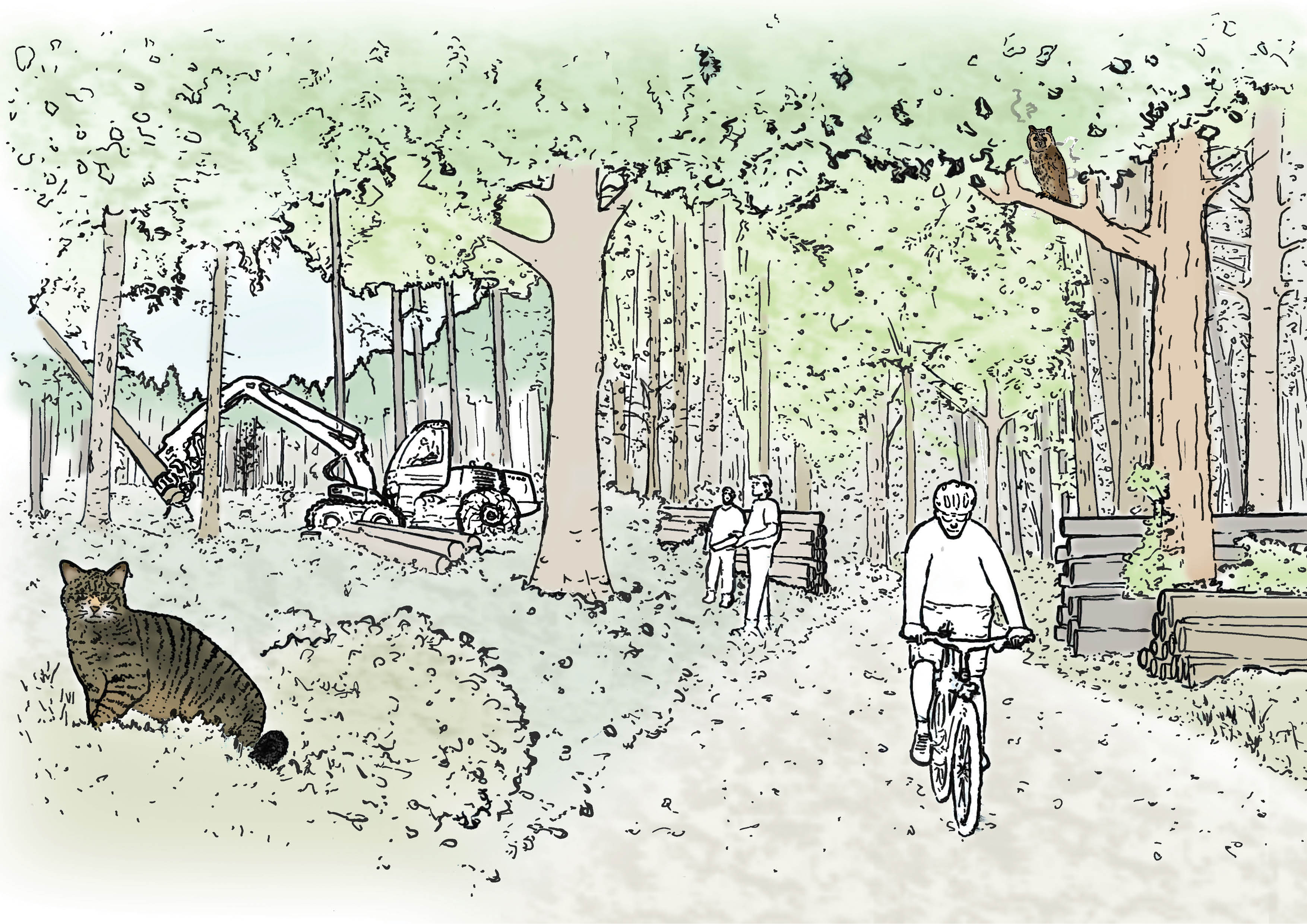
Coniferous woods
Many existing forests in Parkstad were used for the mining industry and low-grade materials. These monocultural coniferous forests in the region should be diversified. The harvest of a part of the coniferous trees will fill the gap of low wood production in the newly developing forests.
Once these forests are grown, harvest in the existing production forests can be done at an equal rate. The diversity in species and ages makes sure that ecological value will be continuous. However, there should be a certain system in the plantation, so owners can be sure that there is a yearly and constant harvest and yield.

New typologies
It is important to realize that the previous design elaborations are only one example of how the design principles can be applied to the area. Besides the variable translation to the site, it should be clear that these transitions will not happen one day to the next; it will be a gruadual transformation of the landscape.There are preferences in how this transition takes place, for instance attaching new development to existing ecological strongholds. But in practice, the developments will never be the ideal situation.
The result of this strategy is a renewed heuvelland reconnected with its inhabitants. Food production, ecology and recreation are no longer enemies, but united within the same landscape and enforcing one another.
